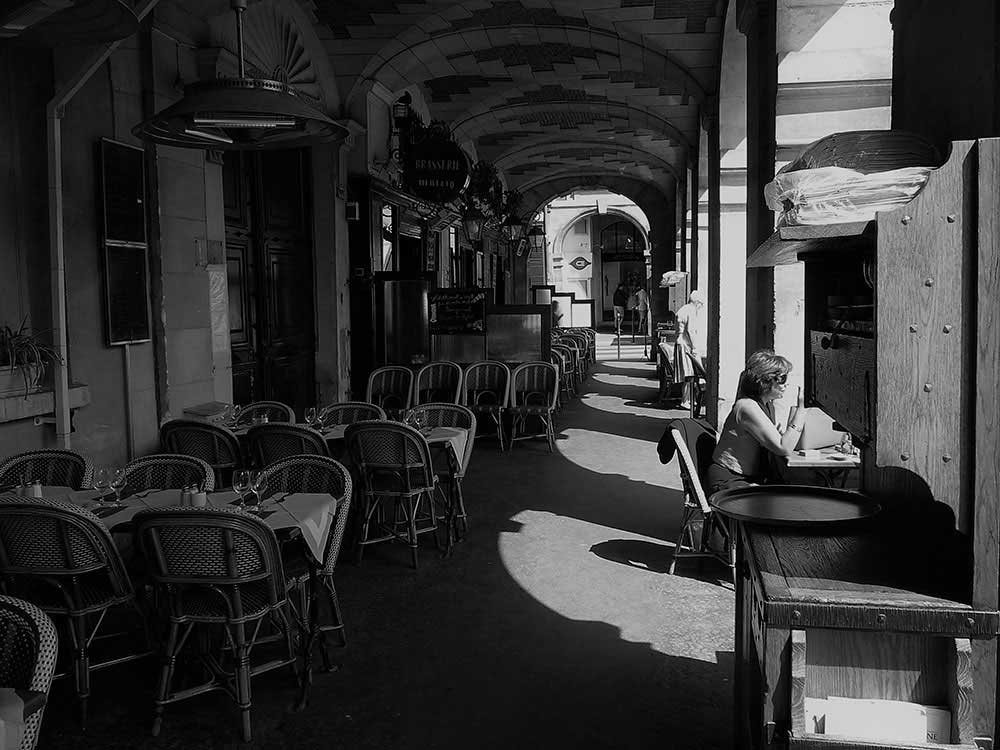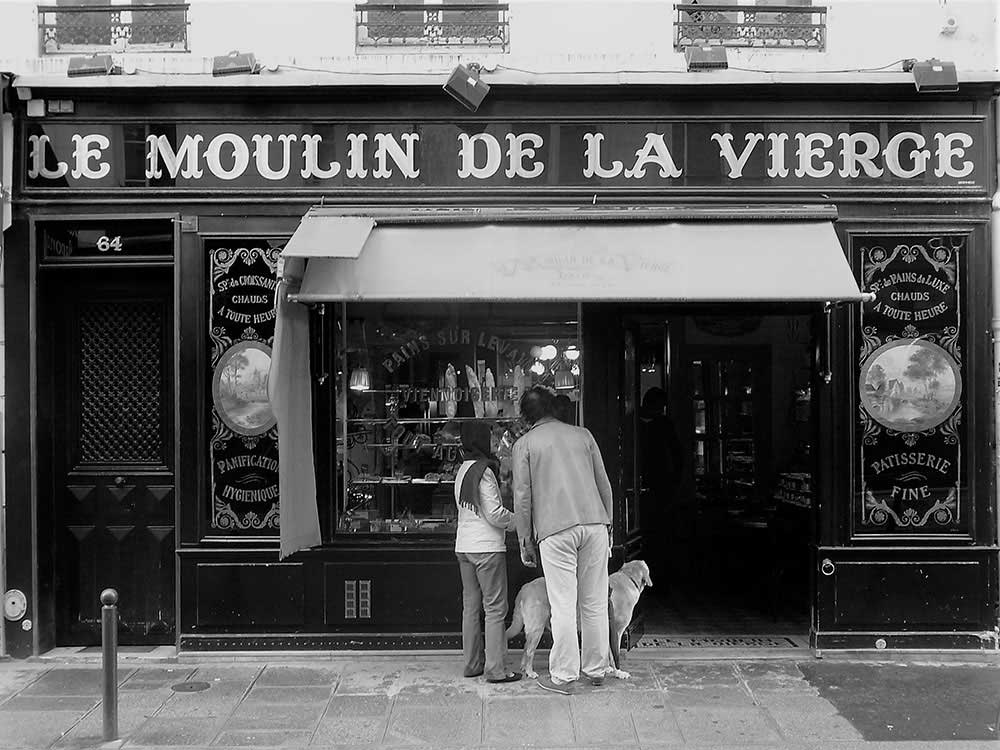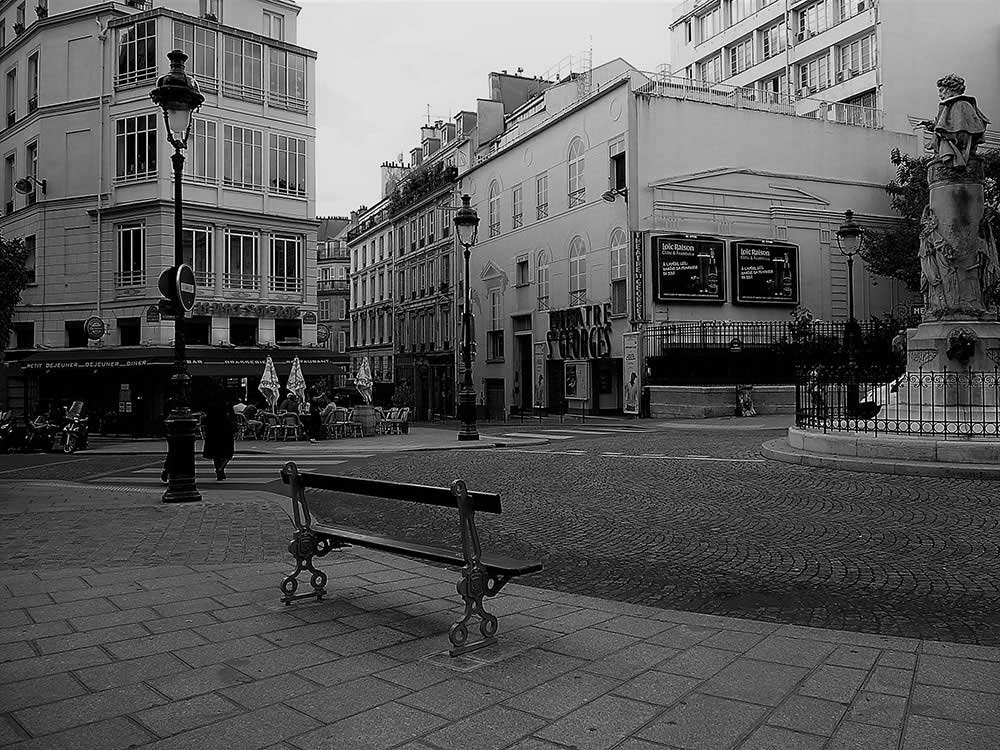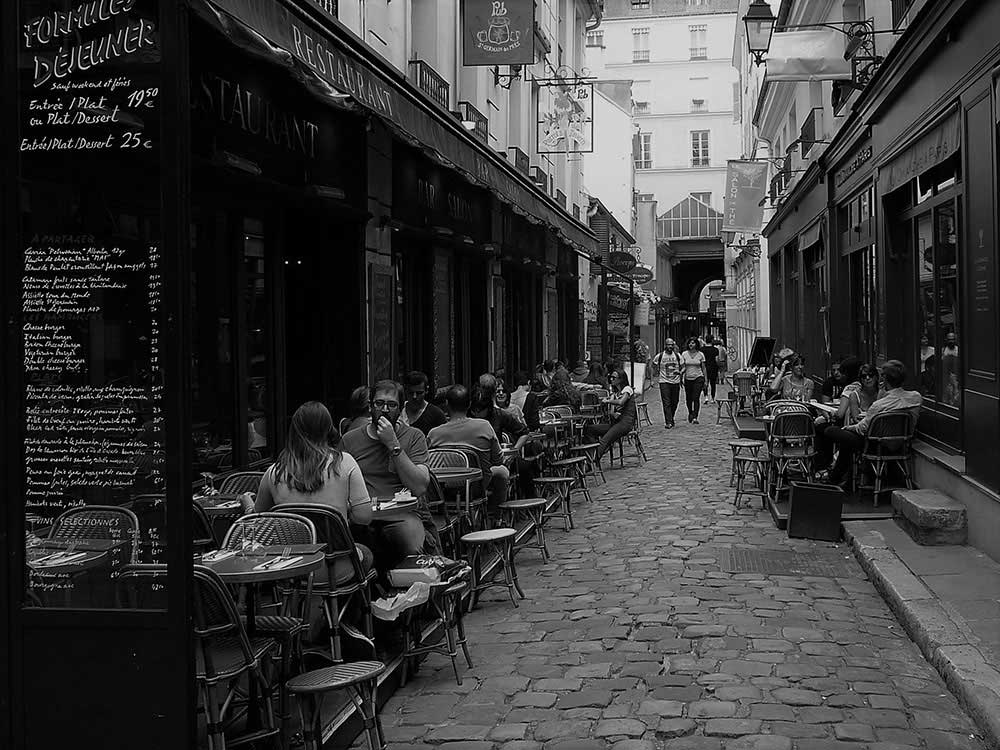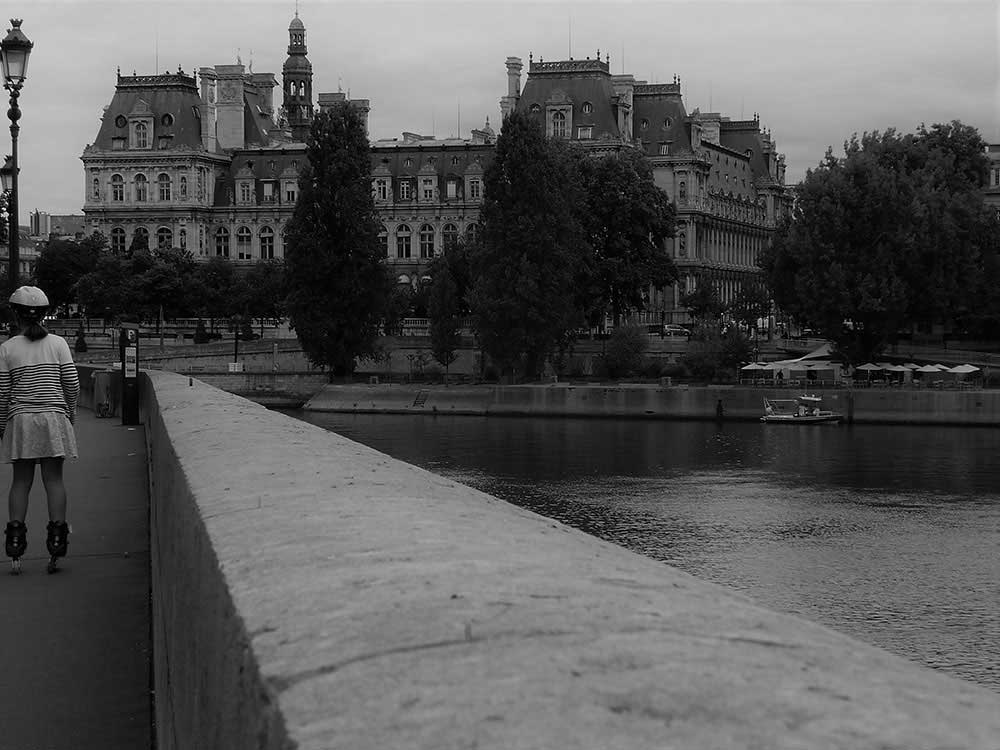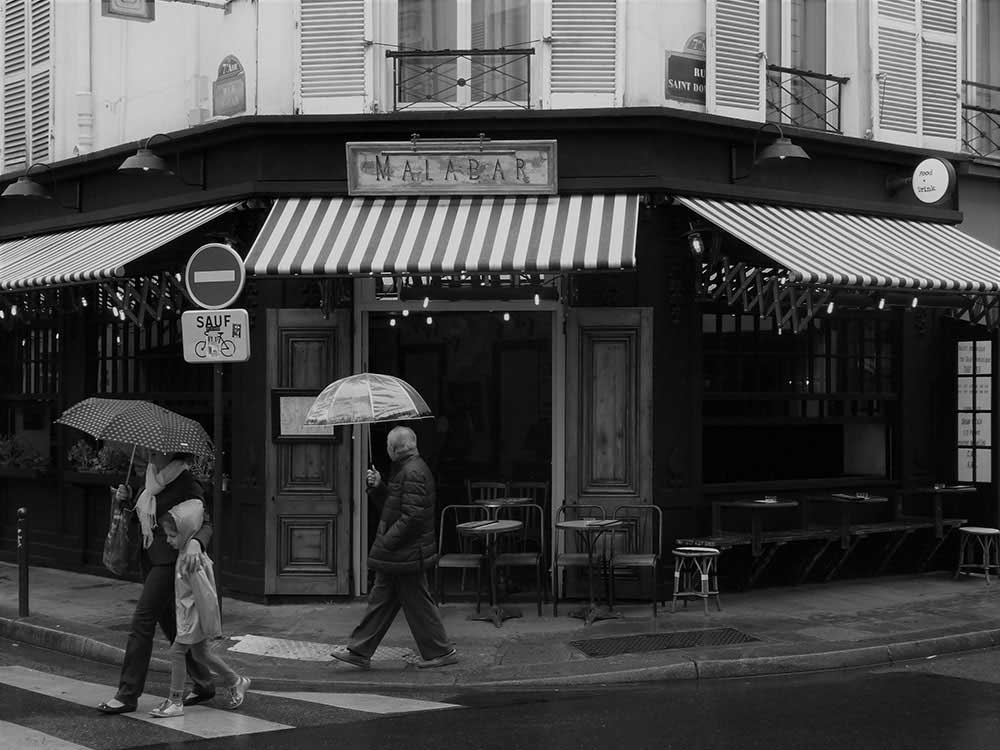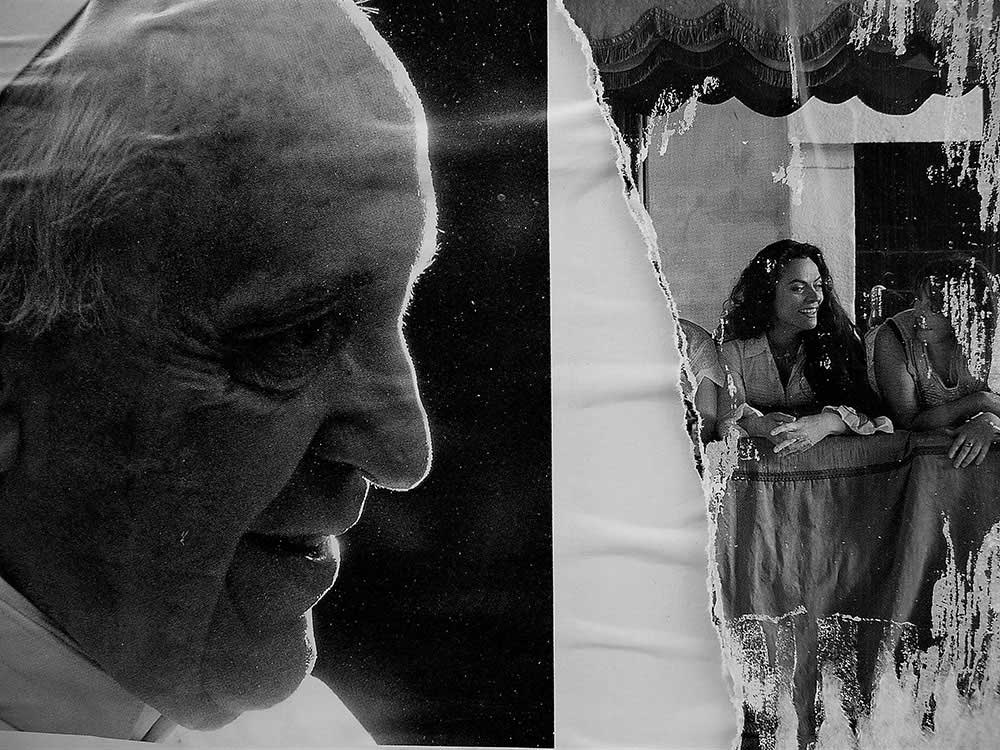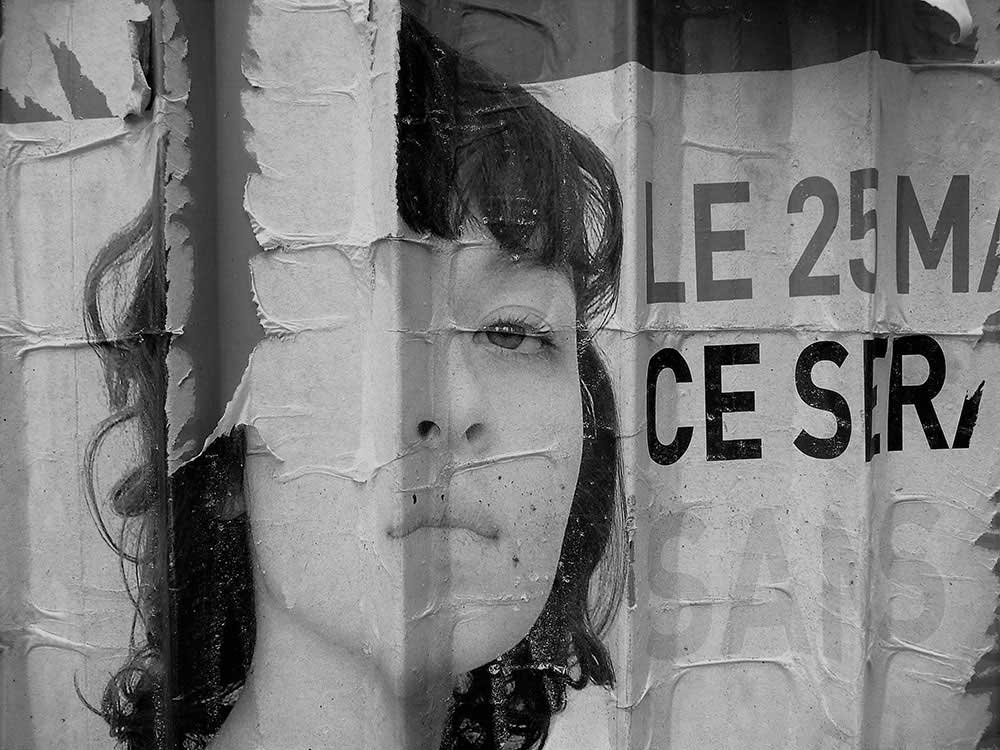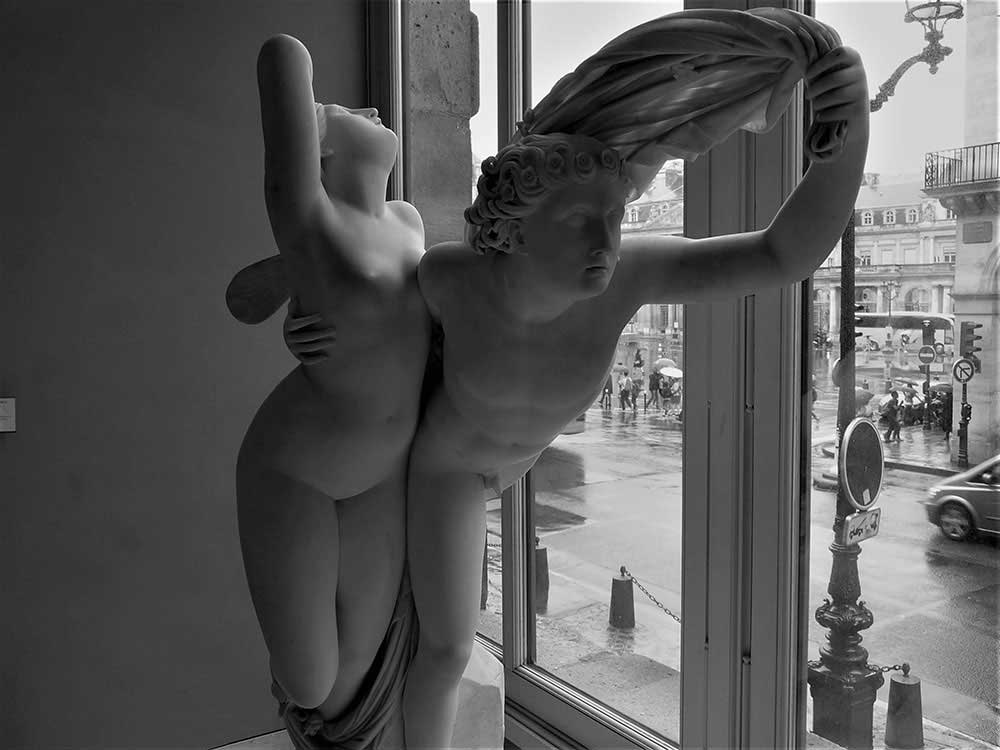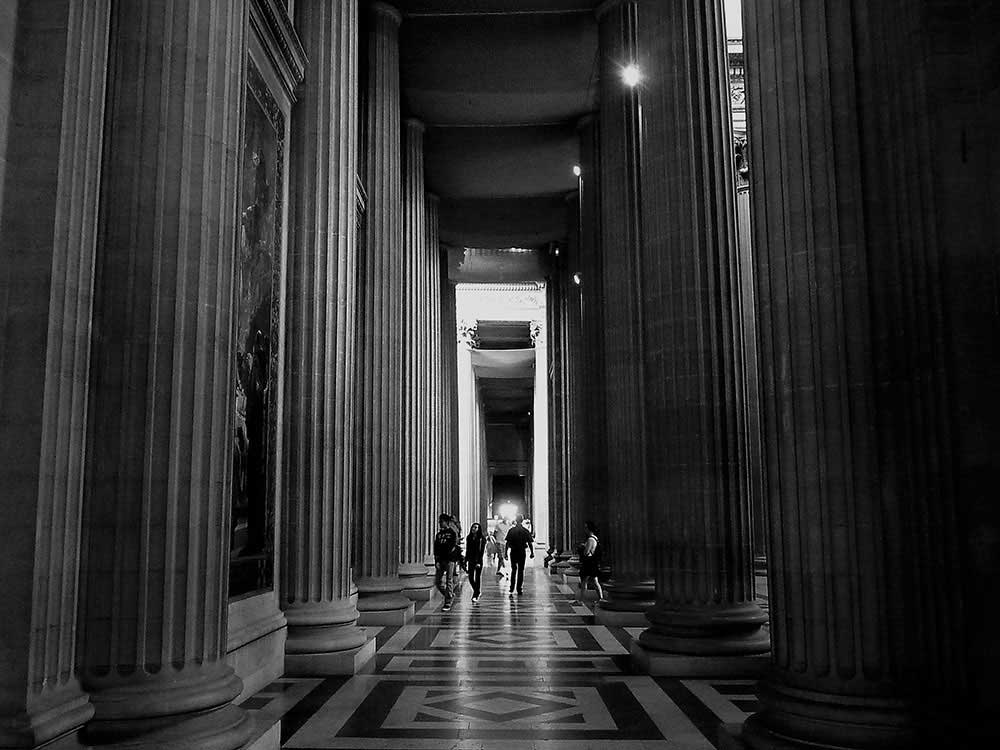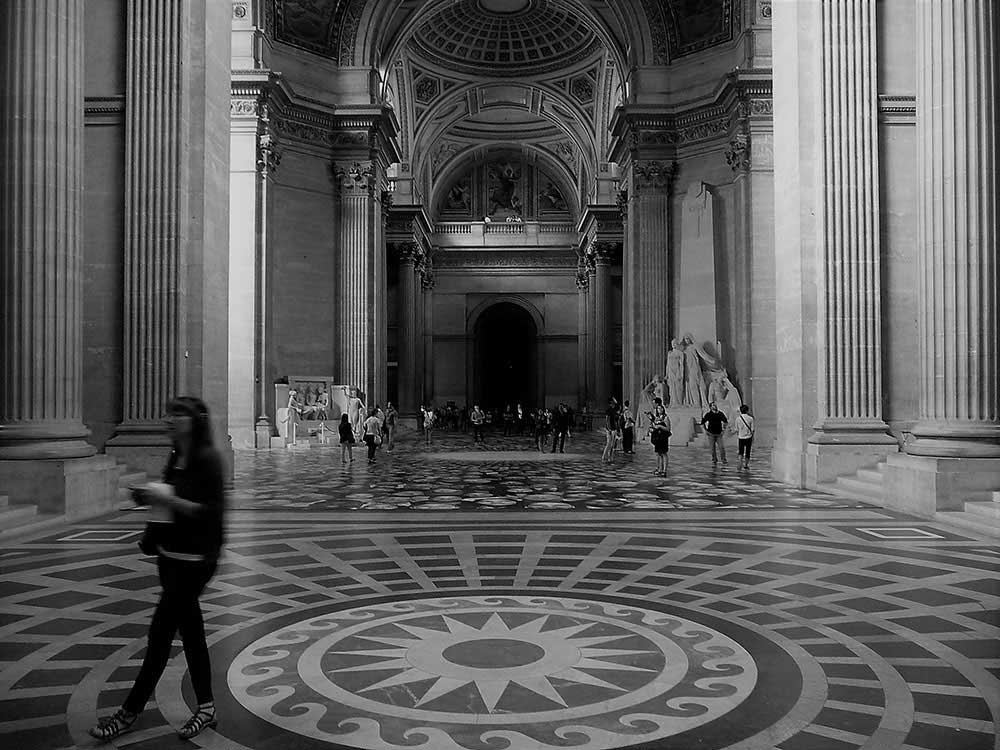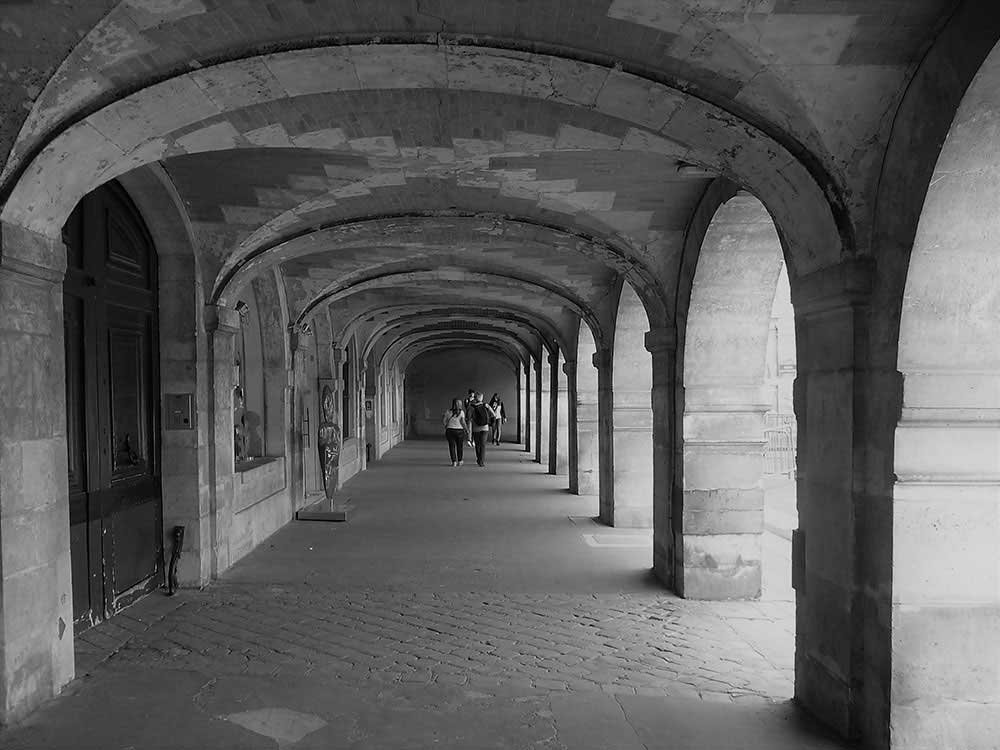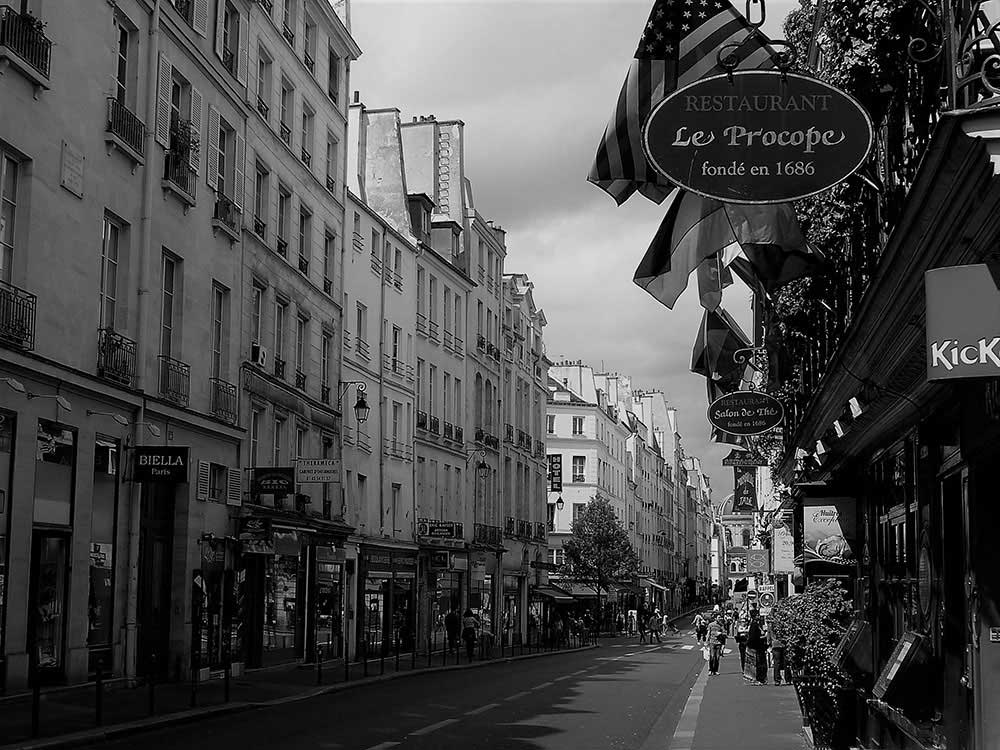“To err is human, to loaf is Parisian.” – Victor Hugo, 1802-1885
“If a little dreaming is dangerous, the cure for it is not to dream less but to dream more, to dream all the time.” – Marcel Proust, 1871-1922
[I was invited to Paris by my own discontentment – a condition seeking it’s own clinic. In a dream I had, weeks before leaving, Paris came to me as this remedial hallucinogen, extracted from history’s fecund furrow. It transported me to the sultry company of a ginger Victorian from Pigalle, with a gyrating hind, who pulled me down through the aperture of no return. After some vibrations, I emerged suddenly through a trap door on the floor at the Moulin Rouge, looking up at the billowing bottoms and swinging legs – then I heard his smoky voice, Toulouse Lautrec, was looking down at me, he said, “you have the best view, my friend!” I coalesced myself, and grabbed my long wet lens. Then I woke up and thought, aaha! – travel photography, can it be a “thematic aperture?”]
Paris is one super aperture, set in deep focus for over a thousand years, and it encompasses many variegated thematic apertures: thresholds, that yield a myriad perspectives on the specific facets of this ancient cultural capital. Its monuments, its museums, the cafe culture, the club scene, the brands and boutiques, its women and their love. In this photo-essay, I bring you four distinct apertures, unequivocally, the first should be the “Salacious Aperture” – a perspective of Paris through love and lust, which I am certain, Victor Hugo and Marcel Proust would have approved. Just like the others, the first one is a “thematic aperture?” It’s the view of a certain place, in this case Paris, through only one concept or idea. Travel photography is either discursive or thematic, I prefer the latter – this way, you can pick a theme and set to capture the subjects that narrate a place through that specific theme, like a novel. It’s lust-and-love in this case – the search for this narrative. And, what better place to start than The Louvre, and the most beautiful woman there!
She lives in the Louvre Palace, she is a Roman, from the 2nd Century AD. She had descended from a Hellenistic ancestor, who had looked exactly alike – and she’s a nude, lying on her stomach, with her arms folded under her chin, in eternal contemplation. Her mattress was crafted by Gianlorenzo Bernini in 1619, at the request of a smitten Cardinal Borghese. Her behind is a little scuffed, after centuries of caressing. And, there’s not a single individual today, who can resist touching her seemingly supple buttocks, just to see if she would turn around with a smile, or scowling indignance. Her perfect form, had been obliterating decorum in men, even women, for generations. When I saw her on August 5, 2014 for the first time, there was a sign posted by her side, “Please Do Not Touch,” with a sentry all to herself. She is Hermaphrodite. But, I found nothing equivocal in her form, after staring at it for half an hour – she, was a she!
Polycles (155BC), the mysterious sculptor from the 2nd Century BC, who had created her life size, first in Bronze, must have been in love, or else only a supernatural being could have contrived such inscrutable feminine perfection, more sexy than living flesh. I assume that this sculpture was not created from memory. If it was, it then attests to the sculptor’s acute mastery of the female anatomy. This was a mid Hellenistic masterwork, and the question is whether the use of a nude model was the norm over two thousand years ago, and if a specific woman was used for this luscious work of art. In the early and late Renaissance, sculptors, after an intense study of the human anatomy, routinely sculpted without models, one of them being Michelangelo. This also tells us that the study of the human form was a school unto itself in the ancient times, and that the Greek art of sculpture had already evolved from being stylistic during the age of Pericles, to that of realism, as practiced by Polycles. This was a Roman copy. In any case, she is very much alive in her sexuality, and this begs another question: can a female sculptor create such work, not having the firing element of lust or love?
Observe her form. Her left buttock and the upper thigh, owing to gravity, gently compresses the right bottom one, and the bent and slightly turned waist at the base of the flattened torso is a work of acute command of the female form that resists any analysis, even down to the shadows that yield from her flexed upper muscles. The breathtaking verisimilitude of her soft young and pliant buttocks is so palpable, that it could torture a Cardinal and his entire clergy. I believe that this beautiful woman, some twenty-one hundred years ago, who lay still hour after hour in the studio of this sculptor must have loved him dearly. Who was she? Were they lovers? As relaxed as she appeared, and his passion, evident, in the knowledge of her physical nuances – appears to be an ancient conspiracy to project her sexuality, even her odor, into eternity. This is a love story, make no mistake about it.
And thus, so is Paris, a theater of love. A crucible of lust for a thousand years, from which poured forth material, as well as metaphysical dramas of love. Paris had been a muse to many – Napoleon I, through Napoleon III and his minister of urban renewal: Georges-Eugene Haussmann. It was Victor Hugo, who railed against the destruction of Medieval Paris, especially, Notre Dame, which was the setting for his monumental romance of the 19th century, “Notre Dame De Paris.” Then, there was Marcel Proust, whose piercing melancholy (“In Search of Lost Time”) reached over and grabbed me in the 21st century, inducing me to visit him at Pere LaChaise. Paris was the cultural center, as far as one could remember. The English, the Americans, and even the locals: Sartre, Camus and De Beauvoir found themselves there, and found themselves again and again within themselves and in the narrow streets with cafes. The expatriates included Ezra Pound, Scott Fitzgerald, Ford Maddox Ford, Ernest Hemingway, James Joyce and Gertrude Stein – there was even a Spanish fly: Picasso. Their creativity was expressed in their binges, affairs and works. They lingered and meandered for decades – and eventually, everyone who read got to know them.
And so did I, found myself there, although for only four weeks – as an antidote to love’s volatility and life’s dysfunction. I was there for no reason. Was a reason necessary? Doesn’t hedonism, indolence and languor encapsulate the Parisian condition? Paris is also like a croissant, flaky brown on the outside, and its warm porous succulence that dissolves, on the inside, it’s crunchy and cushy at the same time. I saw the city as Hermaphroditic, it was both masculine, and very feminine in a many ways. The massive Romanesque palaces and monuments, wide boulevards and bridges were masculine, dreaming indefinitely of emperors and their marches. Then, the narrow, warm and intimate streets, with cafes and small boulangeries and boutiques, milling people in close proximity to each other, hands brushing, fragrances in confusion, glances stolen or eyes locked, and leaning couples, breathing and caressing the night into each other, in the shadows – utterly feminine.
As if by design, and as if I did not deserve this Parisian experience, I was beset with inflammation of the foot, within three days of arriving. I coped, with the help of the atmospheric beauty, the newness of the balm was short lived – my foot was on fire. I realized that I could not expect the ideal, but to enjoy what was possible – I took what I could, within the writs imposed by the circumstances. So I designed my walks accordingly, a plan when my inflammation abated, and spontaneous when completely recovered. Paris is not a EWNS design grid, it’s a series of cogged wheels, with a monumental hubs like Opera House or Arc De Triumphe and routes shooting out from the center. If one ventures walking, which is the only way to see Paris, one must walk from one quartier to another, from one boulevard to another, cutting across neighborhoods, within narrow sun-deprived streets. The velocity of life on the boulevards is set by the tourists and hawkers, and it slows considerably on the shadowy inner streets, where locals mingle and linger, in the slow dance of obligatory defiance of denouement and expiry.
My first walk was that of a mesmerized tourist, from Arc de Triumphe, on Avenue Des Champ Elysees, passing an outdoor exhibit on the 100th anniversary of WWI, towards Grand Palais and Petit Palais, where a little detour yielded the delights of Pont Alexandre III, where I hovered over the waters of Seine, gurgling in contemplation. There on the bridge, I met Sophia from New York, spoke a few moments with her, then she disappeared into the nothingness of throngs, just like we all do. I froze, chilled by this metaphor, with a pang of melancholy, over how, in our exigent frantic existence, we carry on without realizing how sudden and short a stop we have on the platform of life.
I gave up following for her strawberry-blonde head, and trudged on to Place De La Concorde – a vast piazza surrounded by government and apartment buildings. At the center was an Egyptian obelisk consecrating some distant pharaoh, probably shipped by Napoleon in the early 19th century. It overlooked, a fountain sporting black mermaids with big dripping buttocks. Place De La Concorde, in the 19th century, was a place where Jacobins, led by Robespierre, guillotined monarchists in the revolutionary purges. To my left was Rue Royale, that led right to a Greco-Roman edifice called “Galerie De Madeleine,” through a corridor of famous horologists. Madeleine was irresistible, so I circled around it, and there to my right I was accosted by the smell of baked delights and chocolates, another luxury brand: “LADUREE – Maison Fondee en 1862. Paris,” – edible delights aside, the aproned maidens serving constituted the ‘other’ delectables.
Part of this photo-essay is my immersion into the local milieu, the only way to feel the Paris inside us. I cut across neighborhoods, the bathroom and the kitchen of Parisian existence. My peregrinations were generally with a basket of berries, and a baguette under my arm – and the camera around my neck. Sometimes, I waited in front of a boulangerie or a cafe so I could catch a couple in love lingering by the window, or exiting in haste looking at their wrists – in one case, it was raining, and I stood under an awning, watching and waiting for people to pass by it in umbrellas. Yes, monuments are mesmerizing, but what is infinitely intriguing is the human condition, its myriad forms, in specific environment, atmosphere, and circumstance, and more than anything it’s temporality. Not only is life quick, but so are our rapidly transient conditions. The perceptive photographer would grasp that Parisians live anywhere between F-stops 8 and16, and shutter speeds from 30 to 125. What really “disappointed” me is that our American obese, those out of focus blobs, that take seconds to glide across our lens, with a couple of cinnabons and a whipped cream latte in their hands, were nowhere to be found – they all walk in Paris, and they are all fit!
Commentary and captions on photographs
Travel photography can be a tricky concept. We go about as tourists, photographing discursively, which is perfectly fine – but a thematic organization becomes an imperative, if one is to capture not only the context, but the narrative form as well. I am sharing four themes in my photo-essay, and you will see how each thematic context manifests in various narrative froms: 1. Love and lust, from which I derive the title has several manifestations; 2. Tourists, that enjoy the city on grand boulevards, while residents traverse around exasperated or cower in their neighborhoods; 3. Neighborhoods, that are deserted, have a certain visual flavor, where life ebbs and flows based on the moods of the locals; and 4. Writers – to avid readers, no visit to Paris is complete without visiting their resting places. Writers had, over the centuries, given us images of Paris and the conditions of residents through peaceful and turbulent times, that had induced millions of us to visit. David McCullough’s “The Greater Journey” and Graham Robb’s “Parisians” are must reads for any aspirant who wants to understand Paris, before he or she even thinks of buying that flight.
For me, without the authors and their insights, I would be just another “tourist,” who visits, without really ‘visiting’ anything. My trip to Paris was to conscerate the writers who, in their minute detail, had me live in Paris with pleasure, while I existed in Chicago – this is a tribute to: Victor Hugo, Honore de Balzac, Guy de Maupassant, Moliere, Marcel Proust, Emile Zola, Alexandre Dumas, Baudelaire, Jean Paul-Sartre, Simone de Beauvoir, Gerard de Nerval, and others whose setting of Paris in their works had been the best advertisments ever. The point of reading is to understand and visualize ouselves in other settings clearly, just as any photography enables us read deep into our surroundings. Finally, the two most innocuous photographs, without seemingly possessing any photographic merit. First, is the picture of one of the legs of Eiffel Tower, that to me appeared to be lacy-racy underwear. What did Gustave Eiffel have on his mind? Second, is of the homeless woman on the train, with an enigmatic expression, perhaps inferring, that life, with or without a station, is an enigma. © Raju Peddada, November 2, 2019 – All Rights Reserved on Text & Images
Love-Lust is evident in the following visual narratives
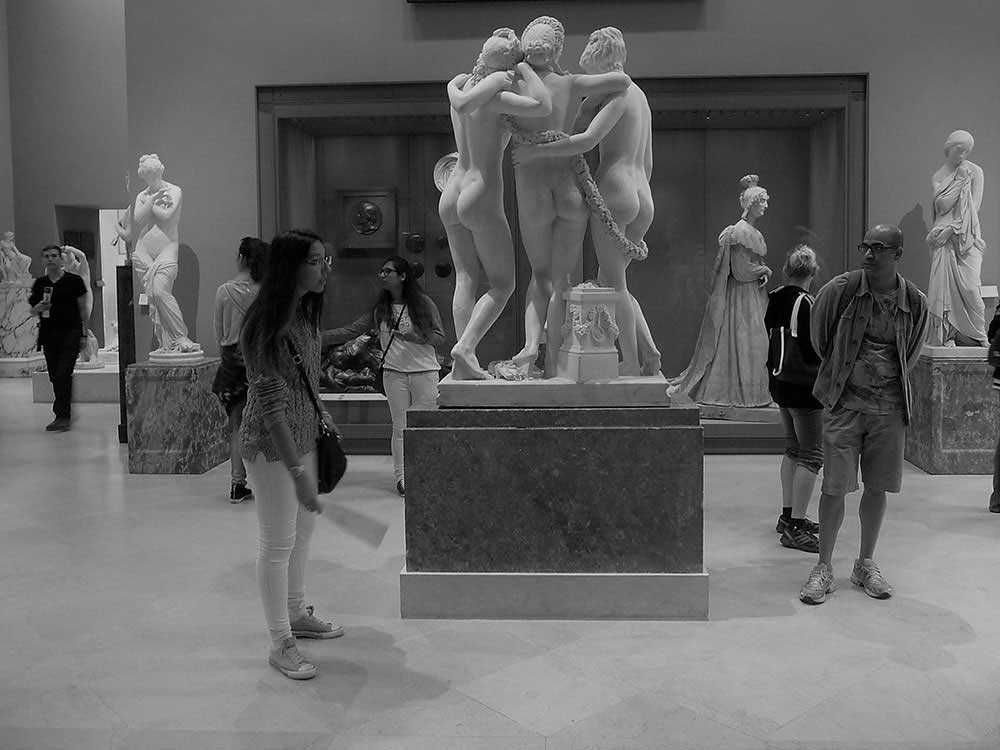
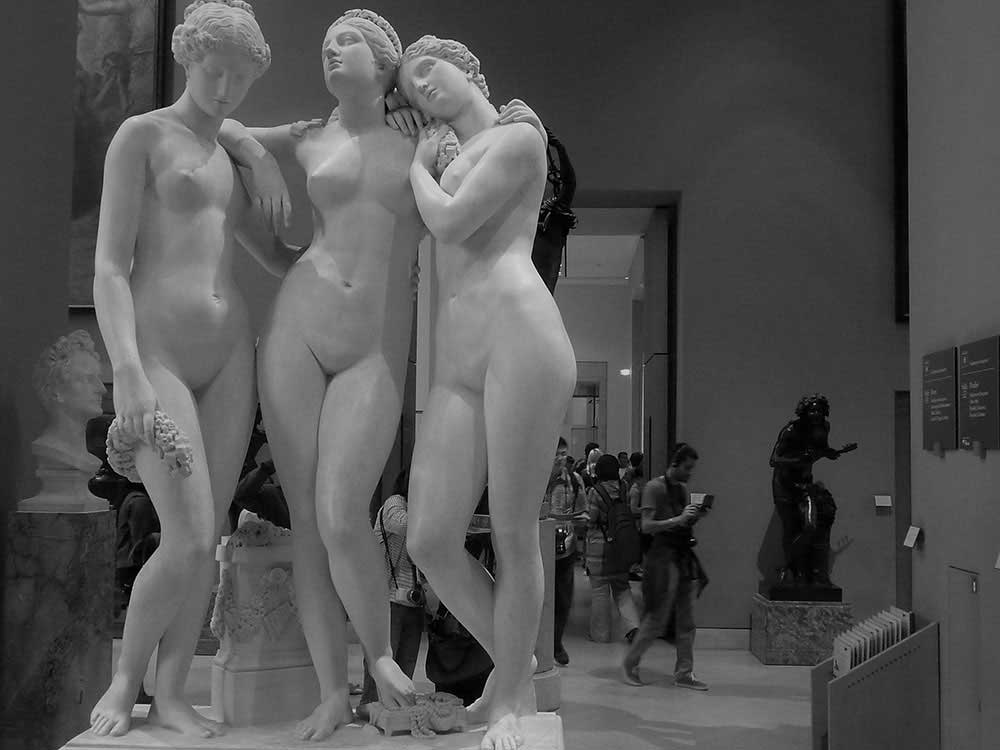
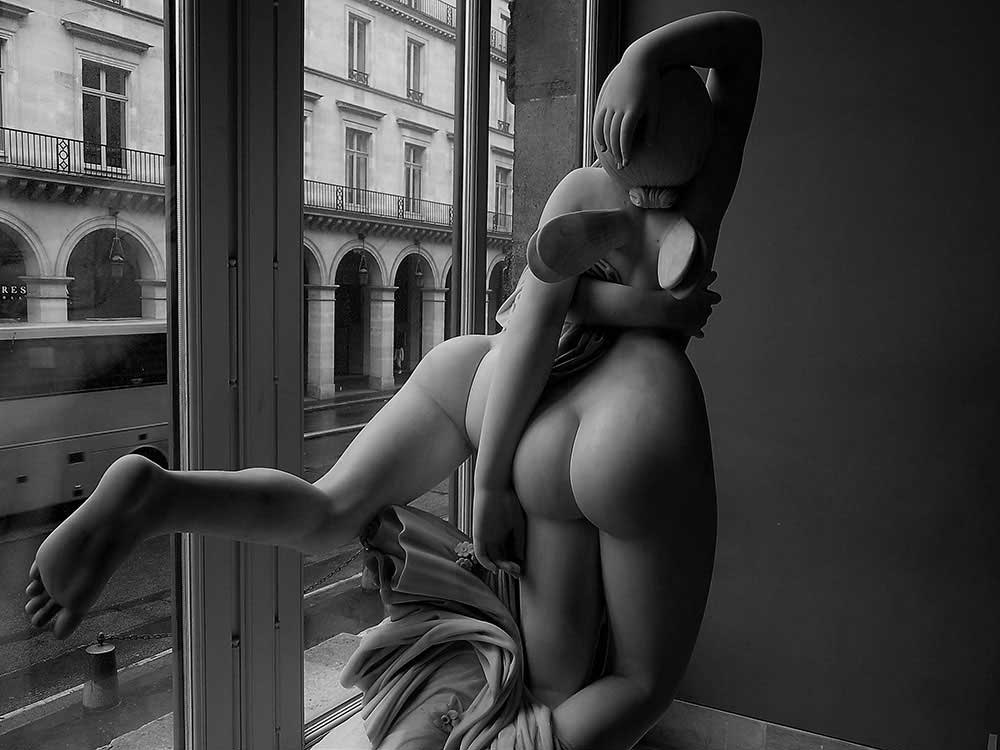
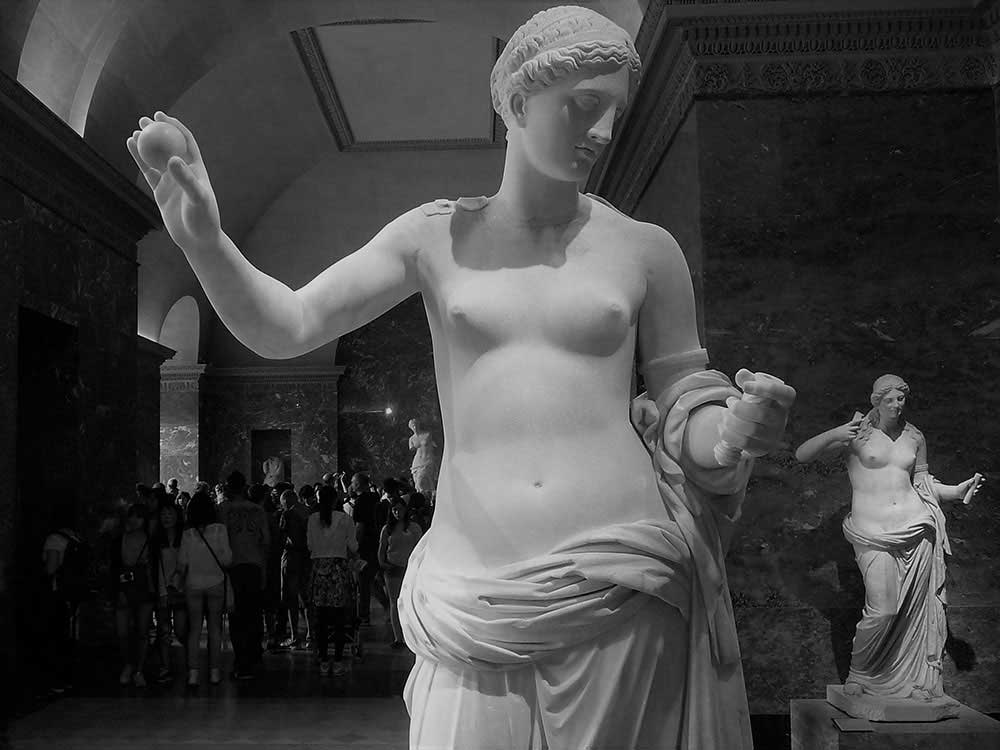
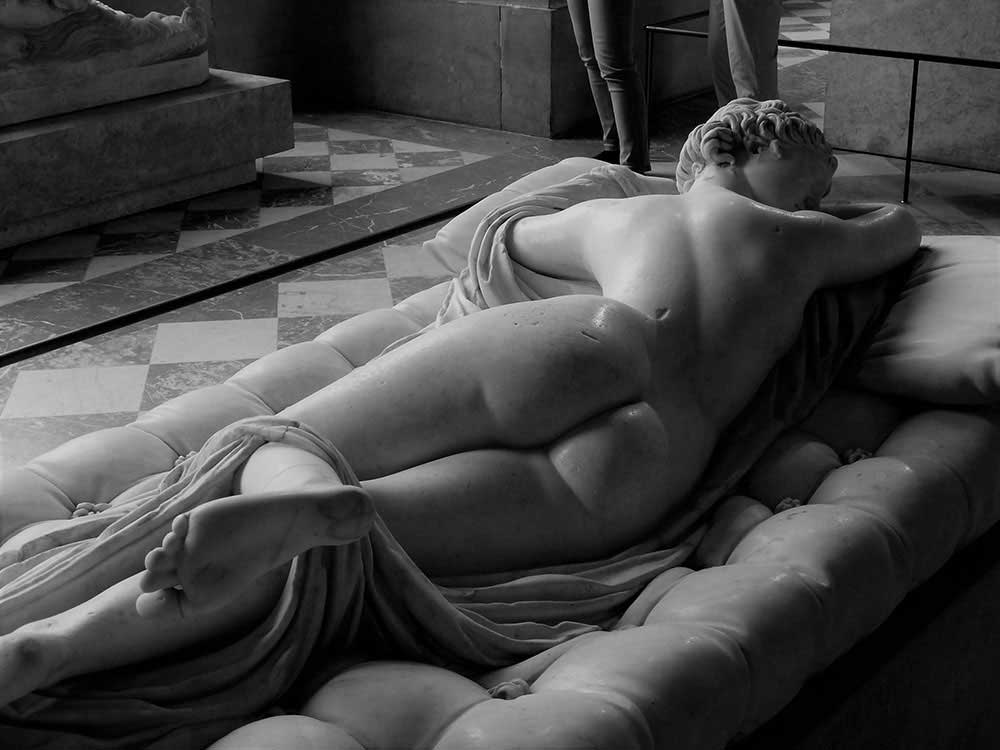
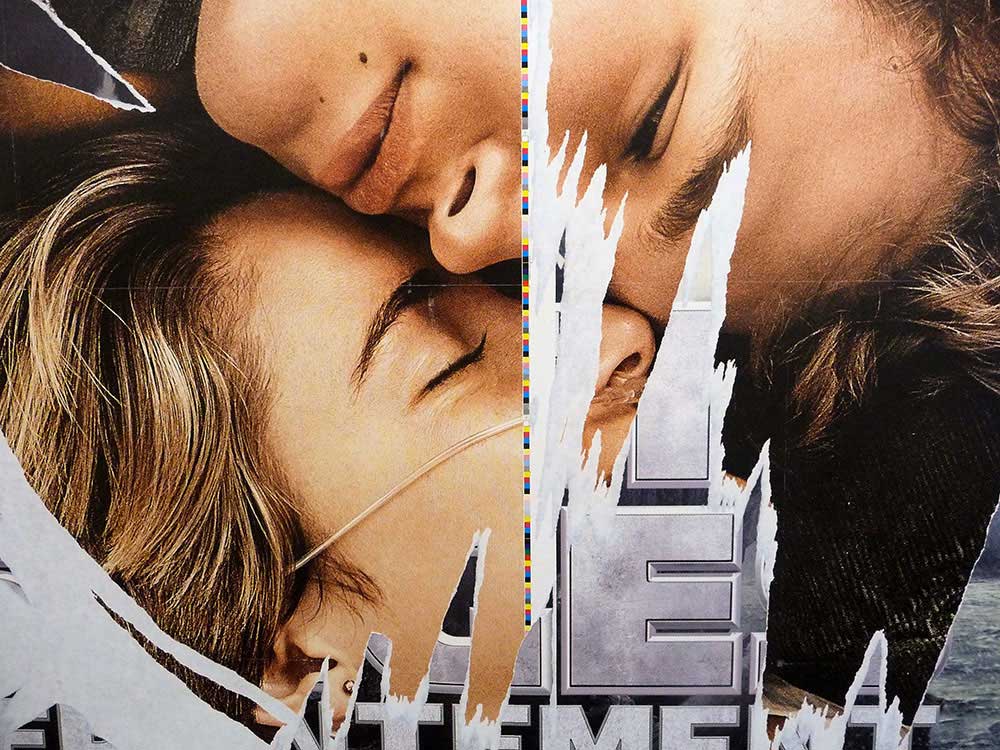
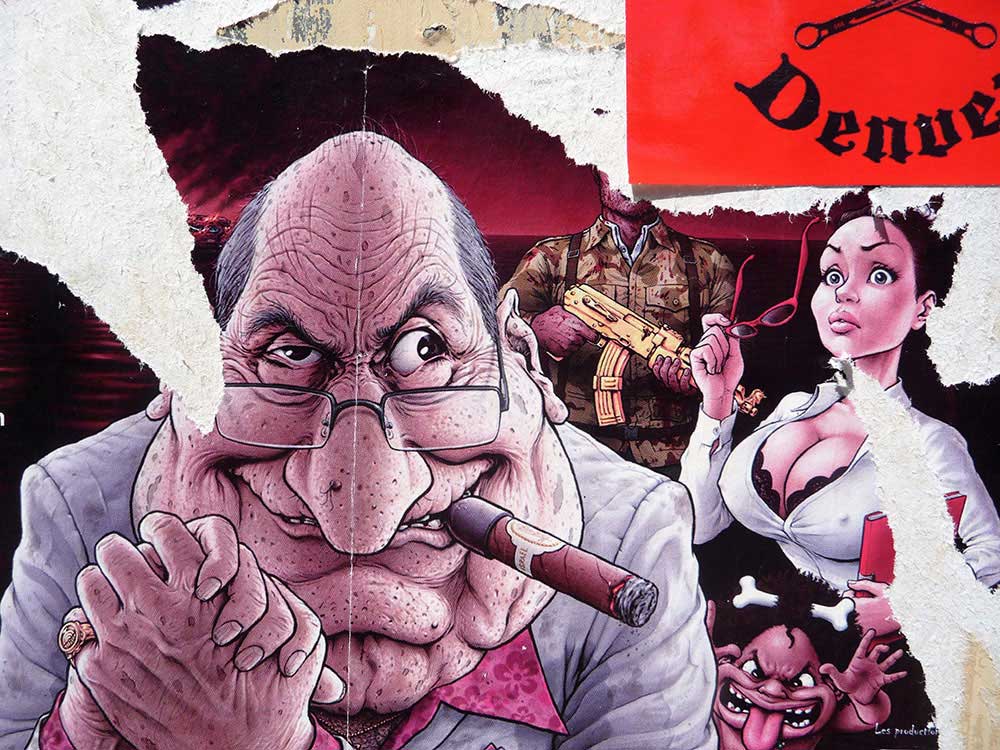
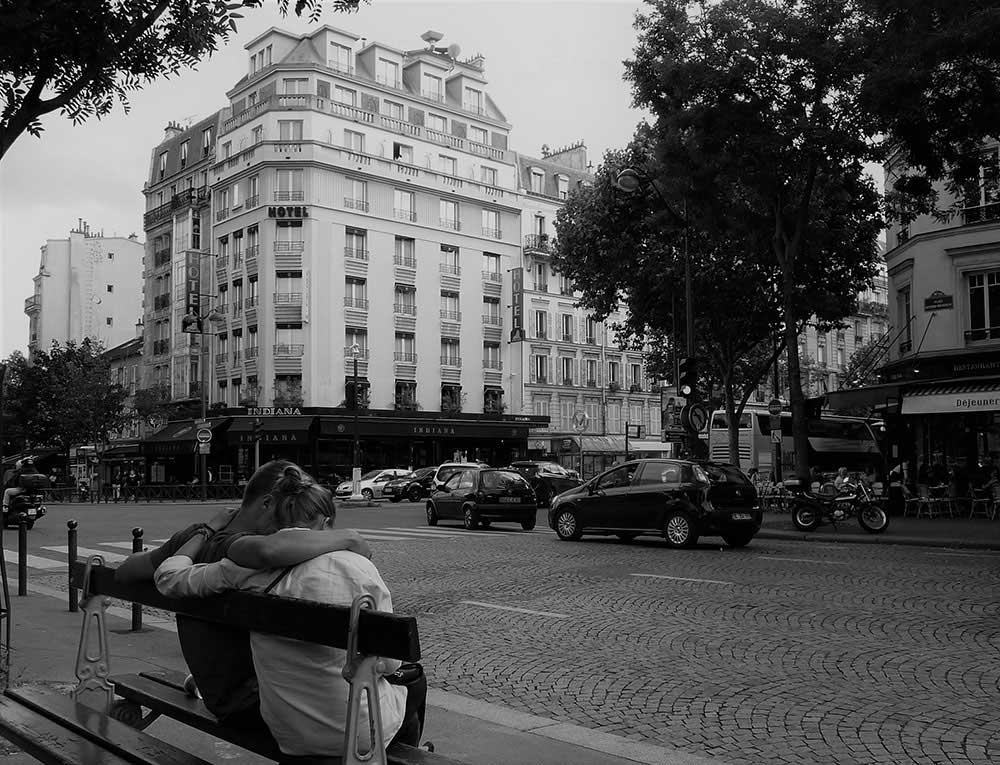
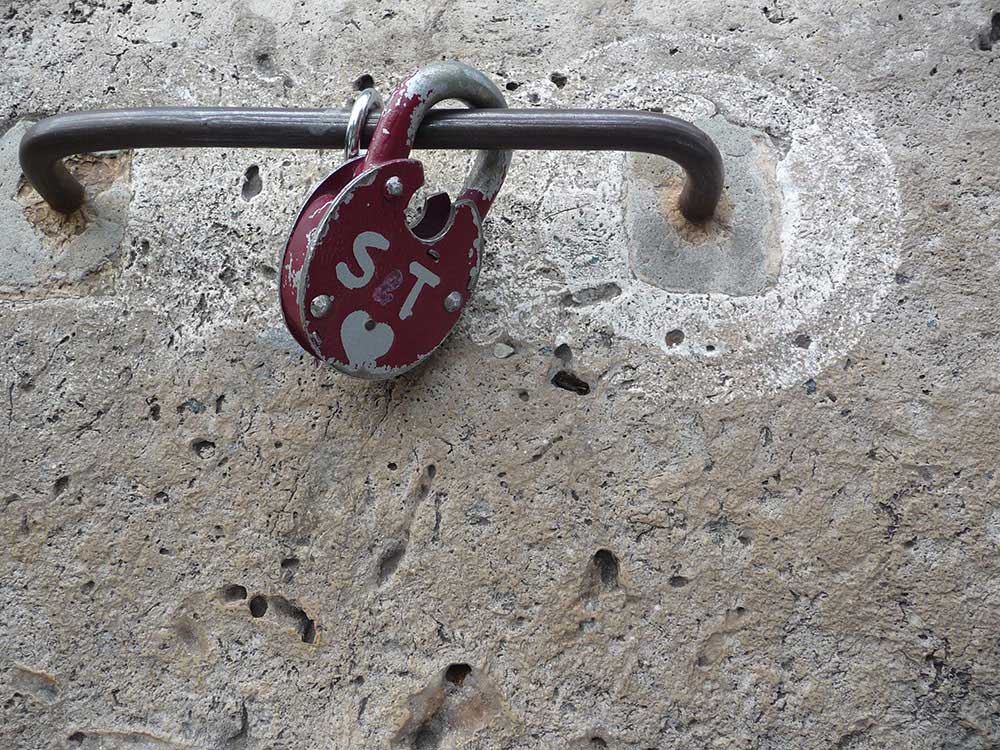
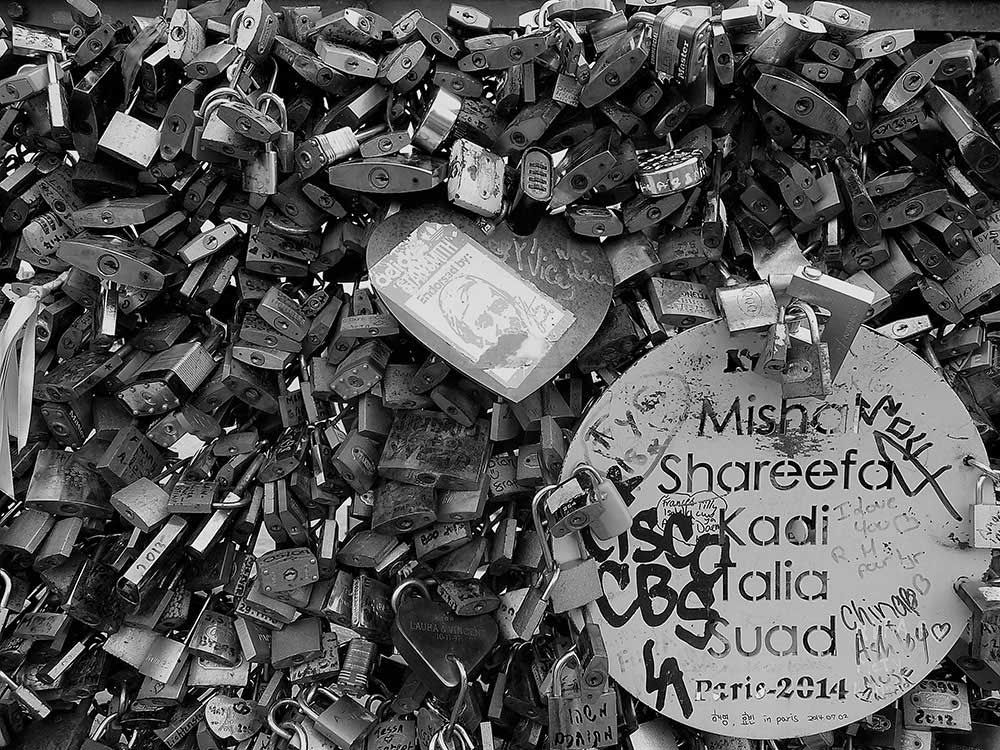
Tourists on wide boulevards and at monuments
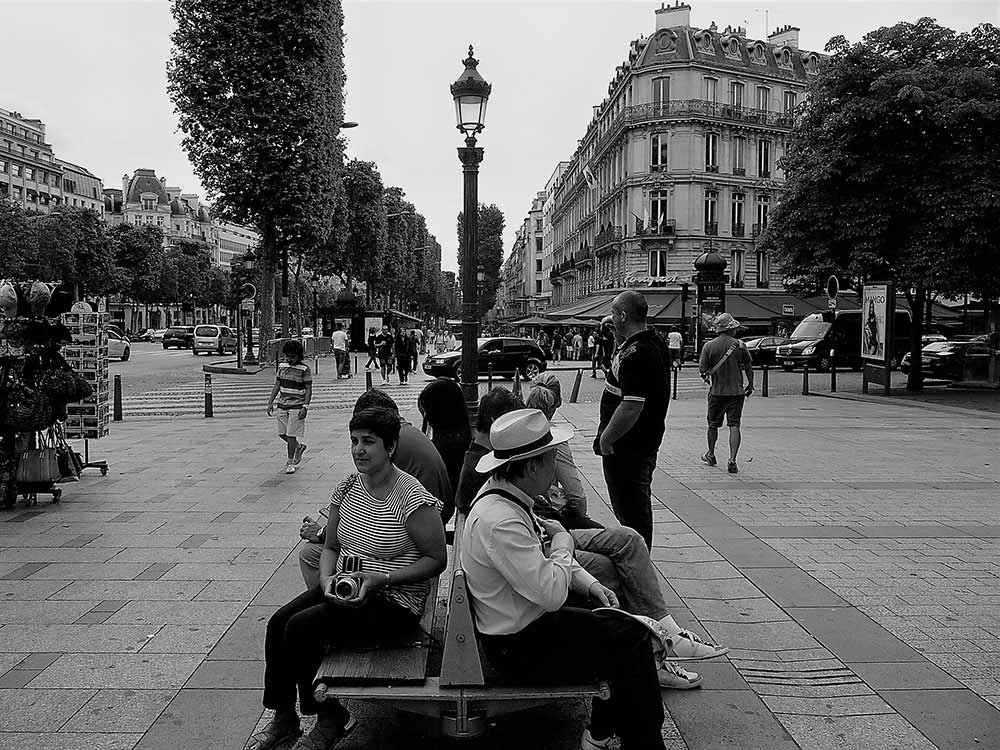
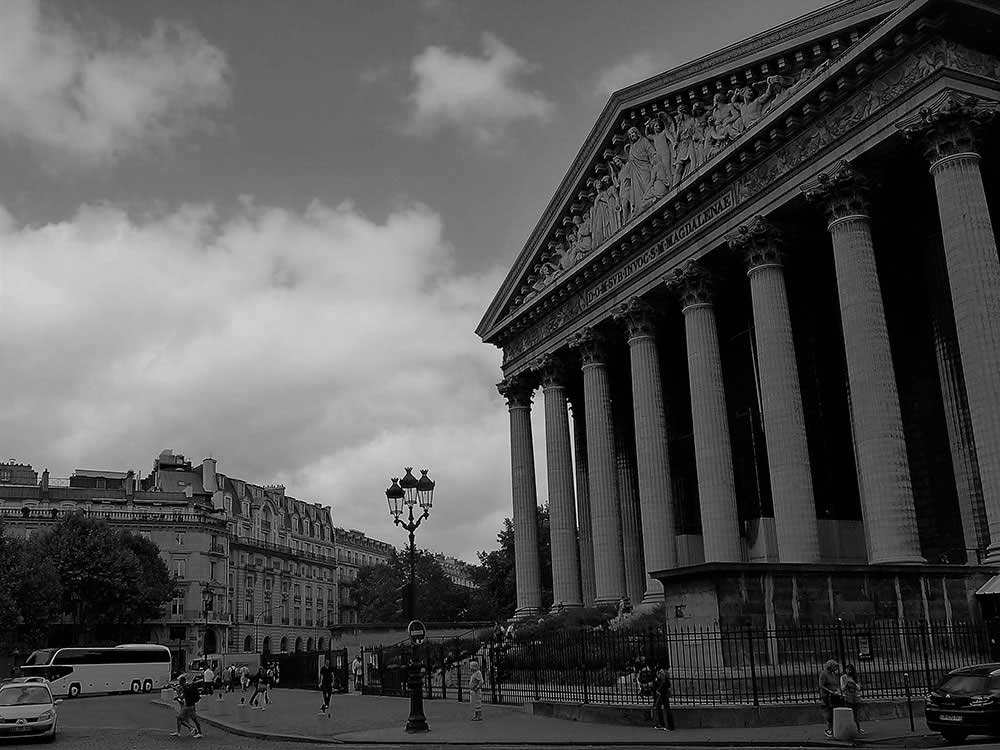
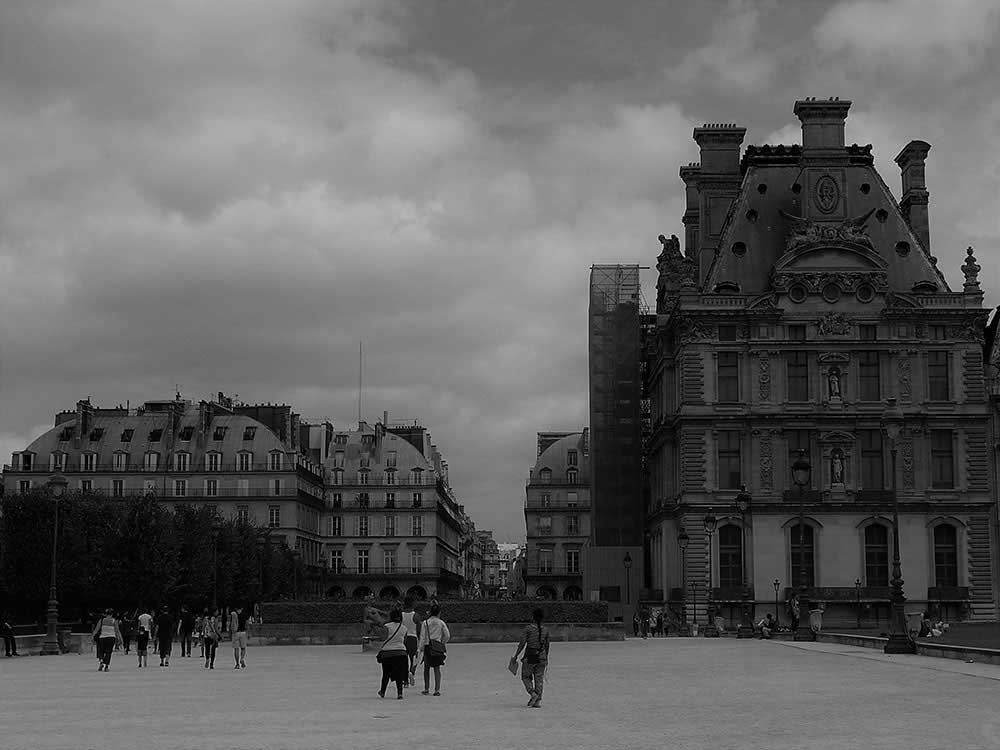
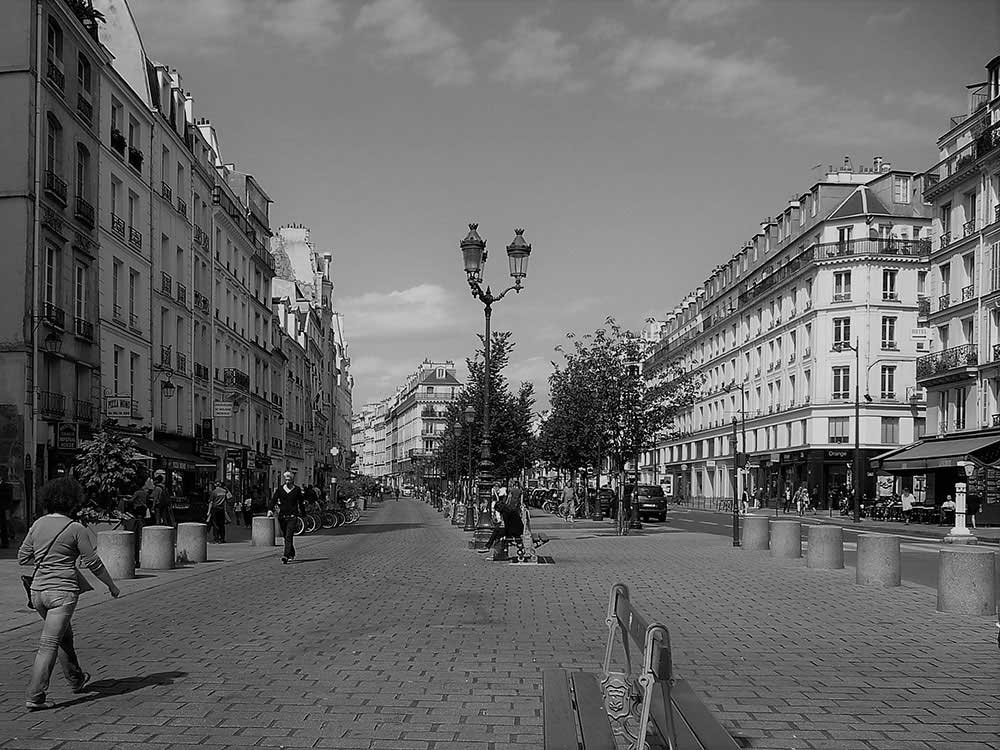
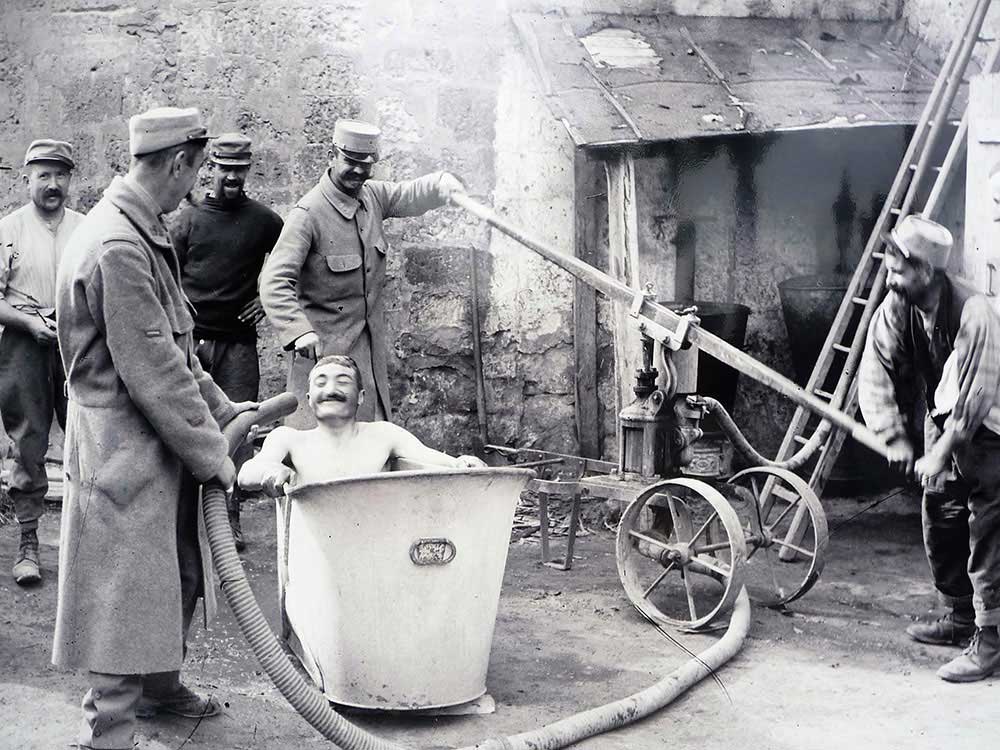
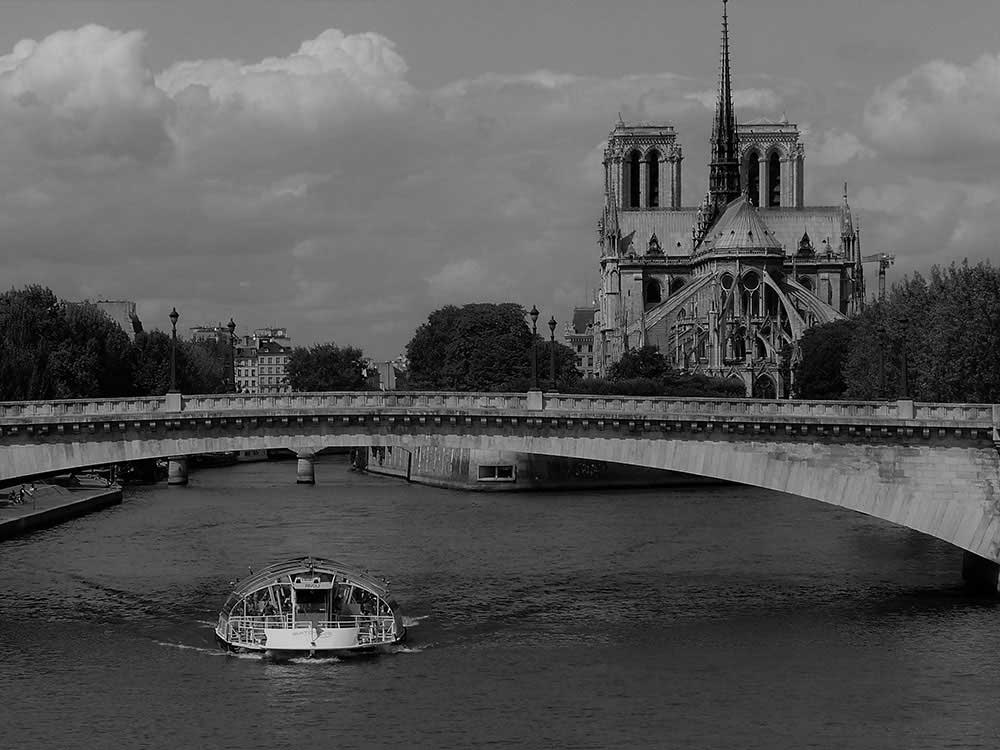
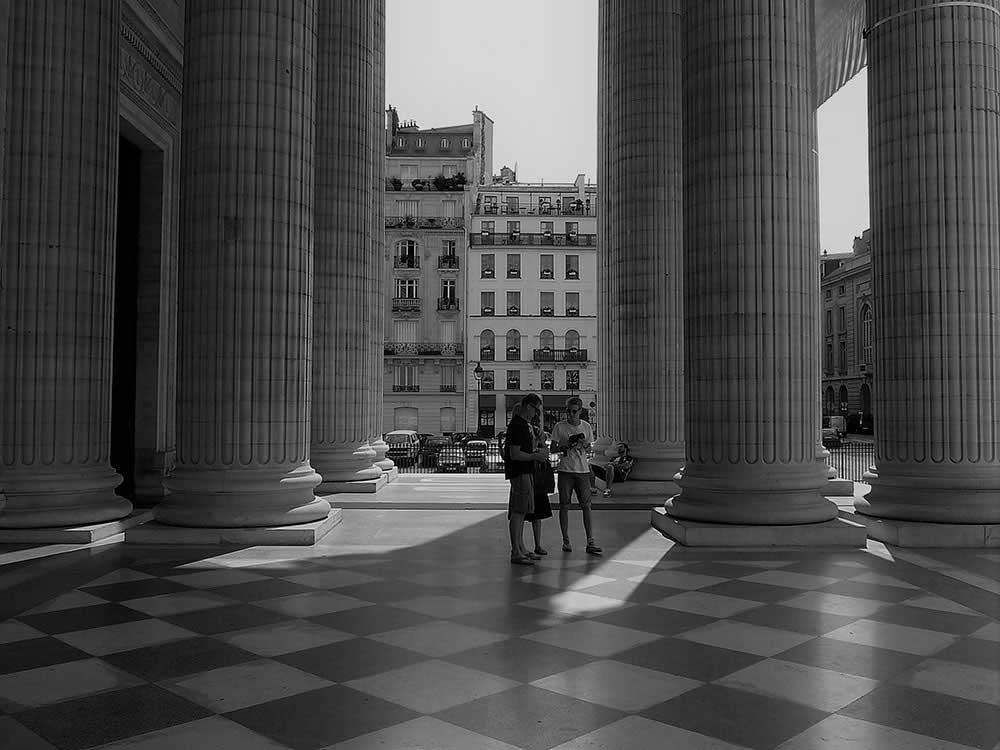
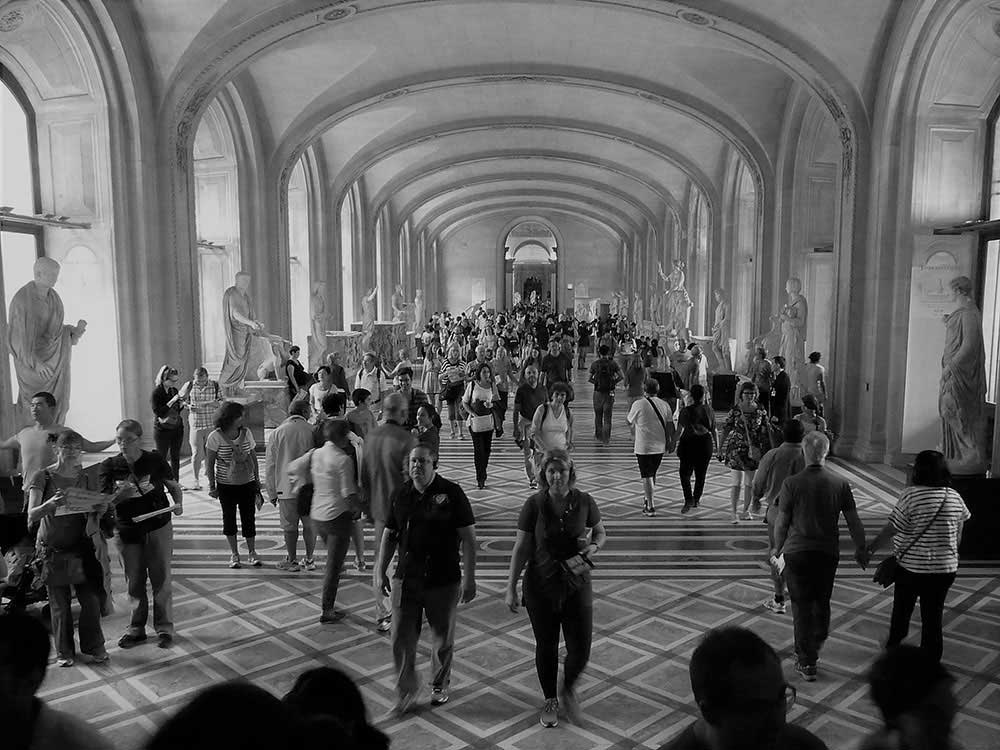
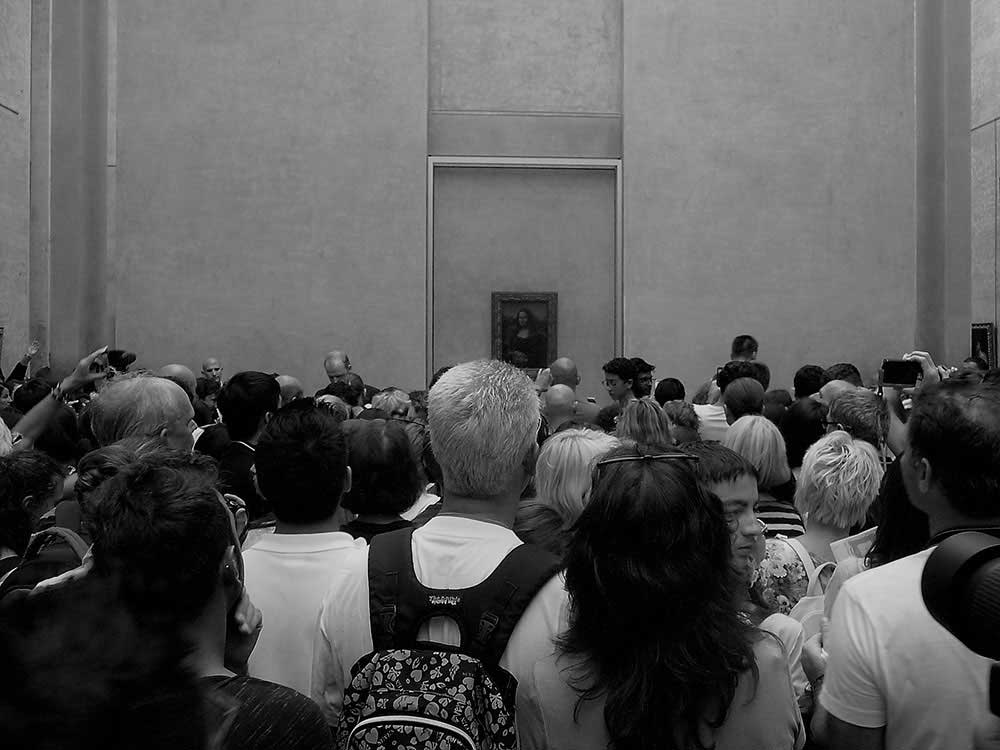
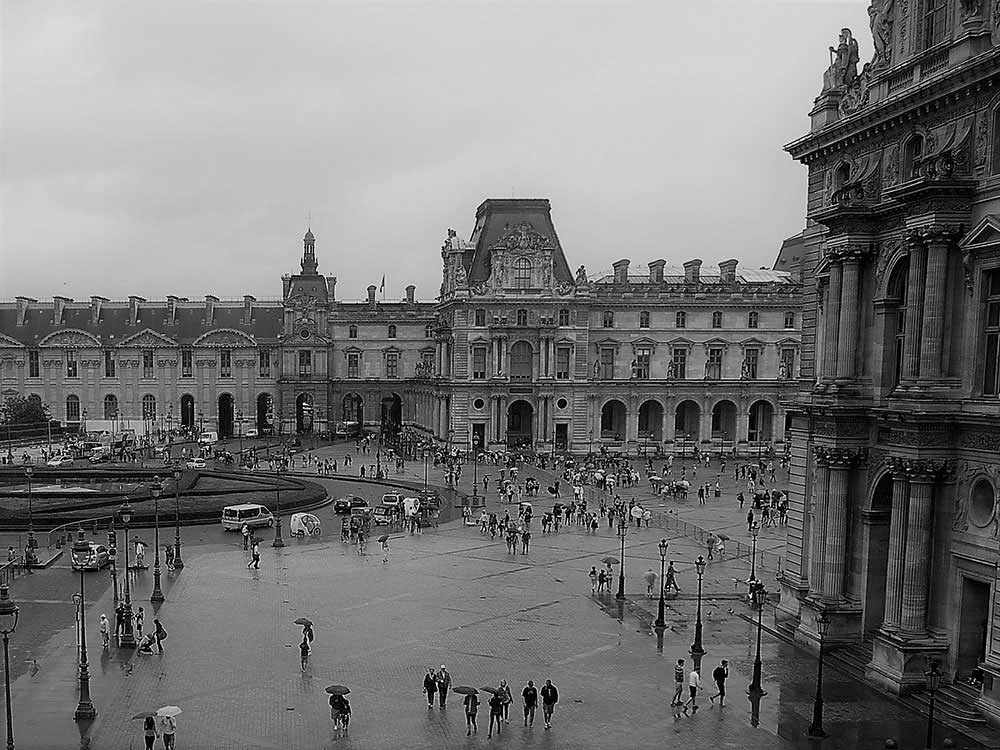
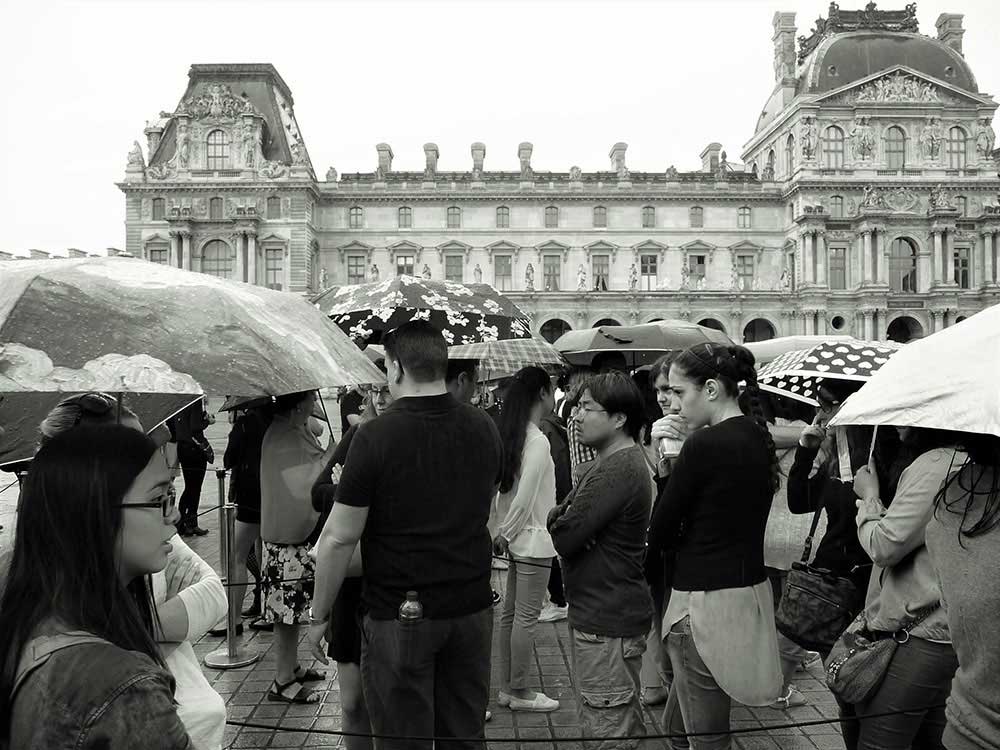
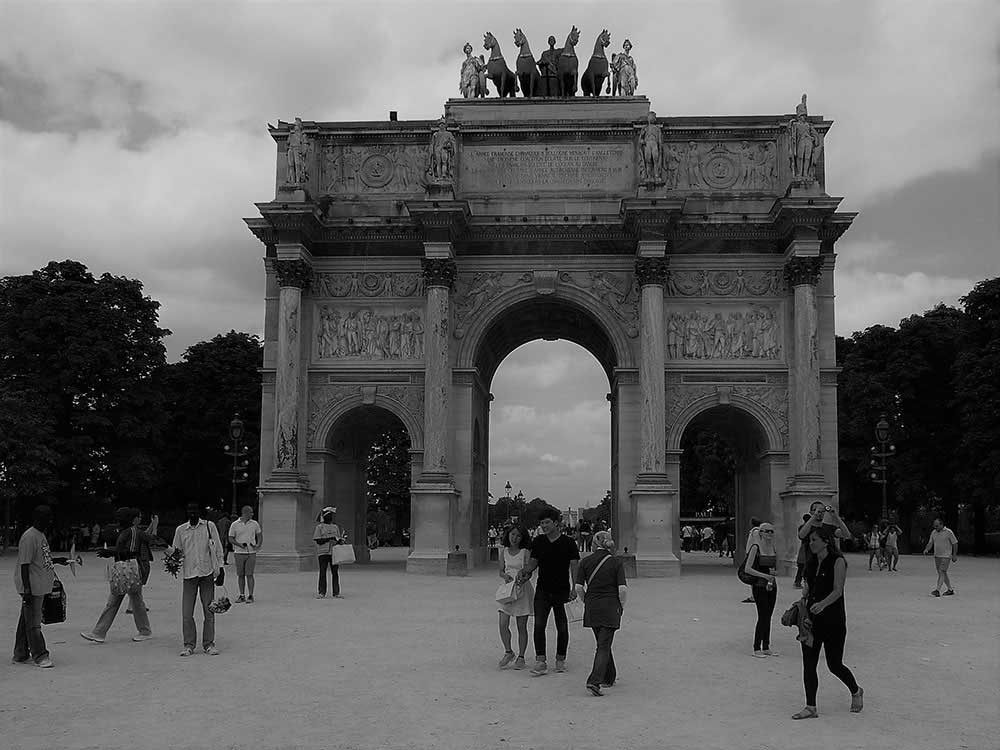
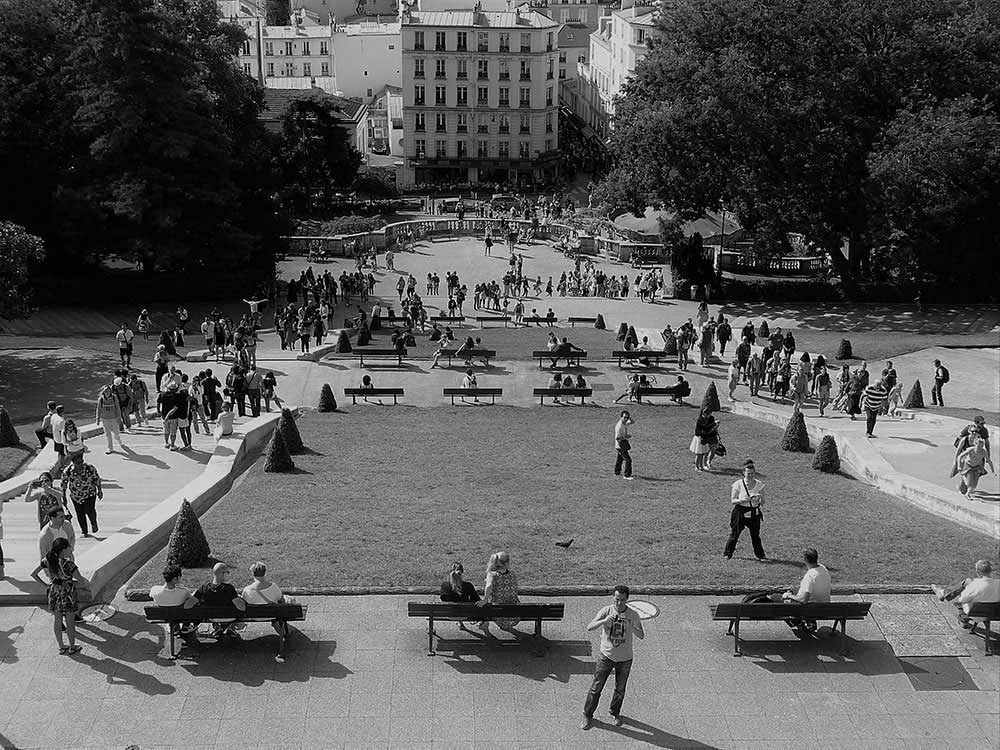
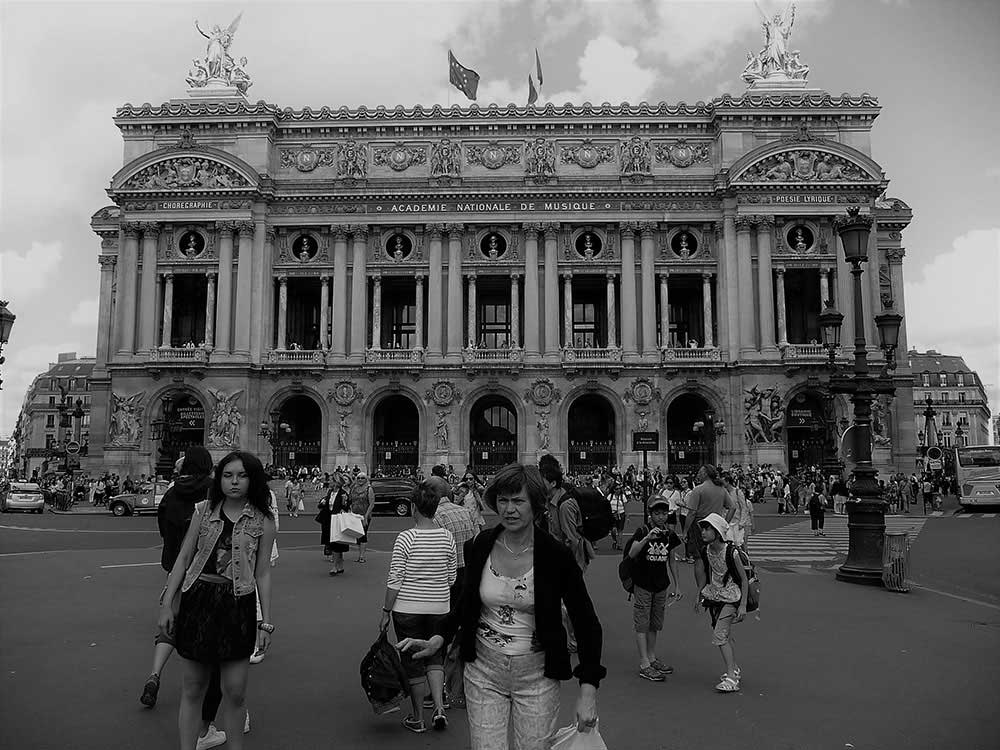
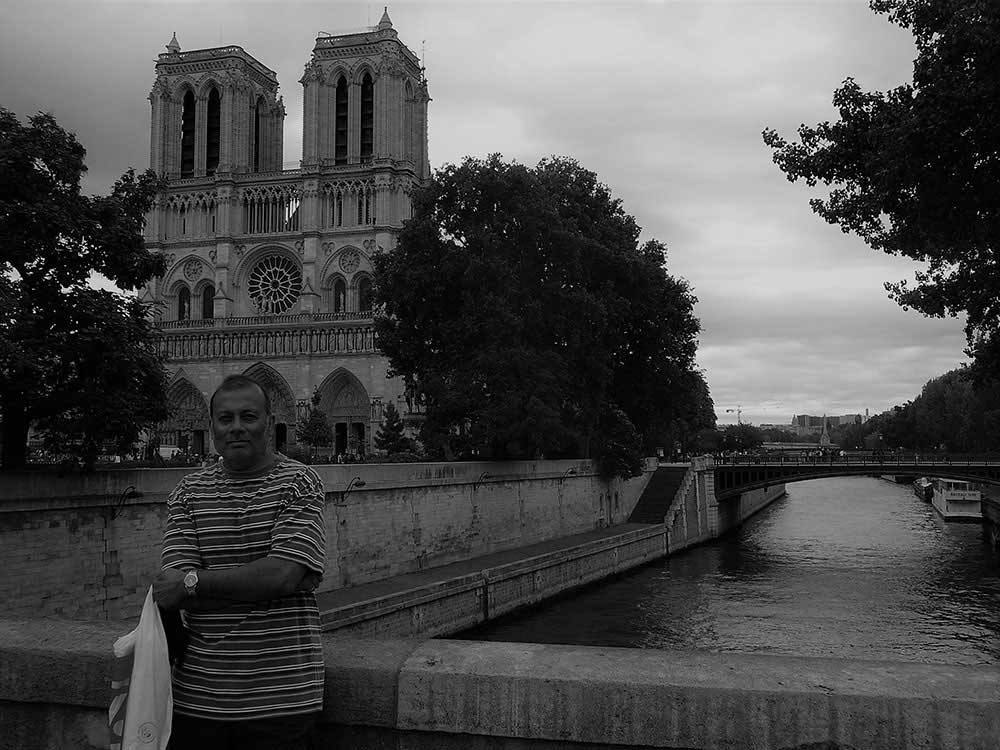
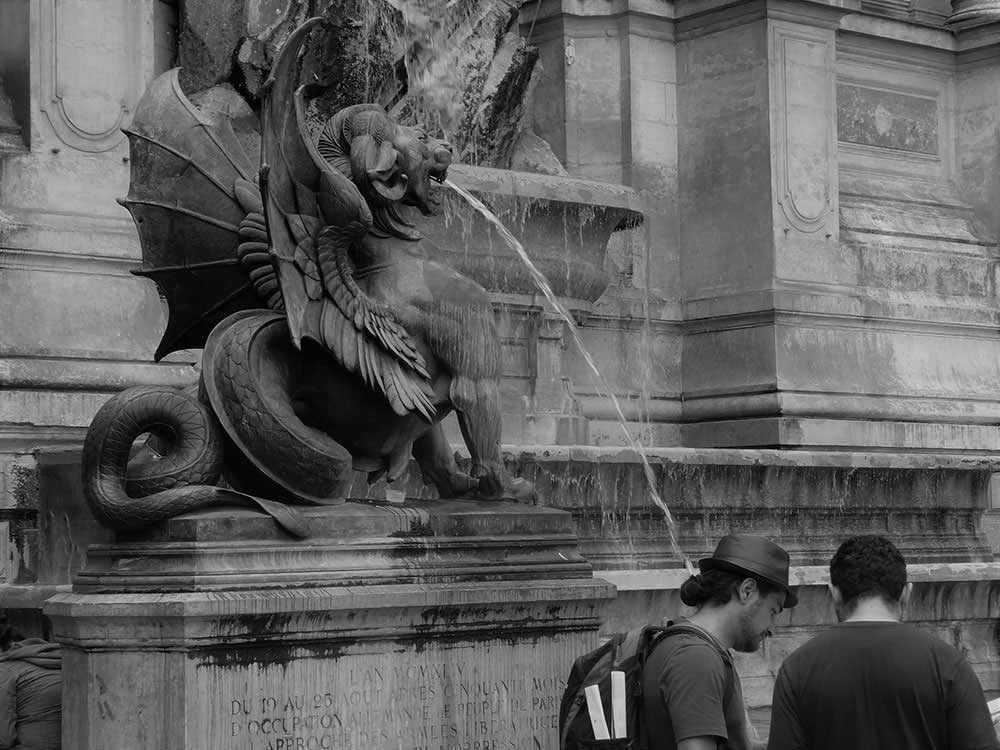
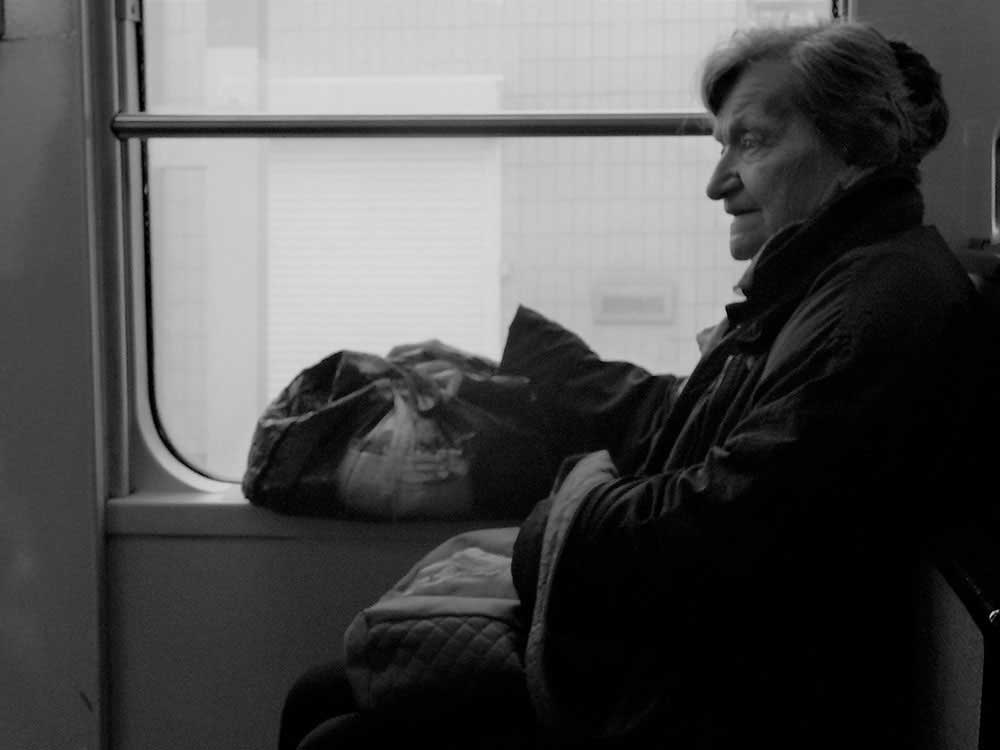
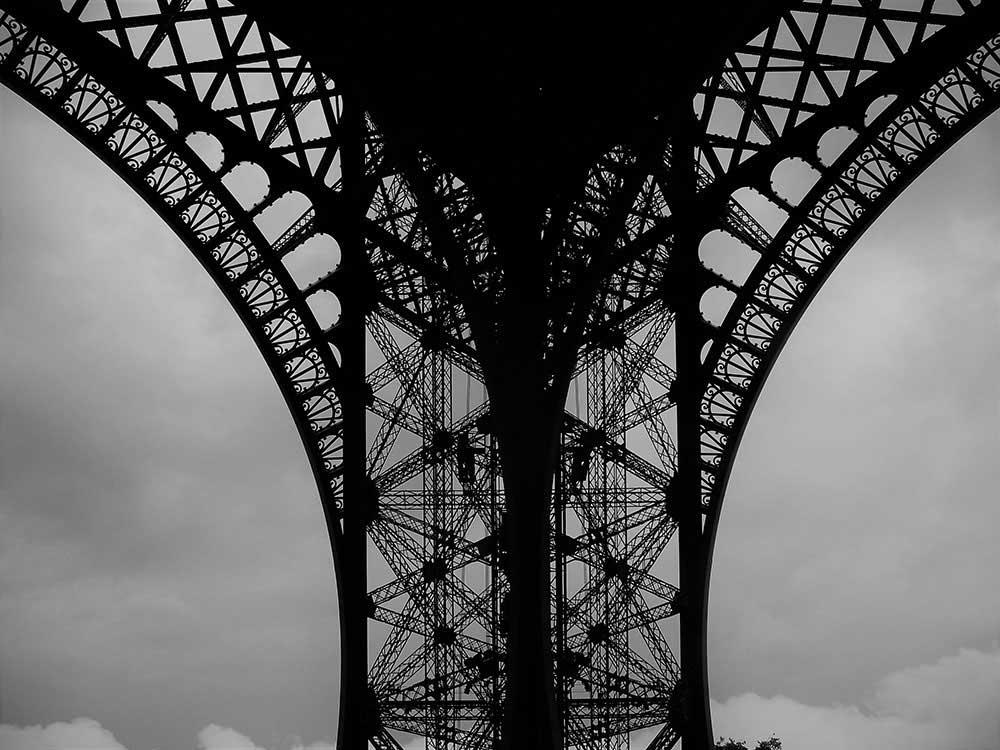
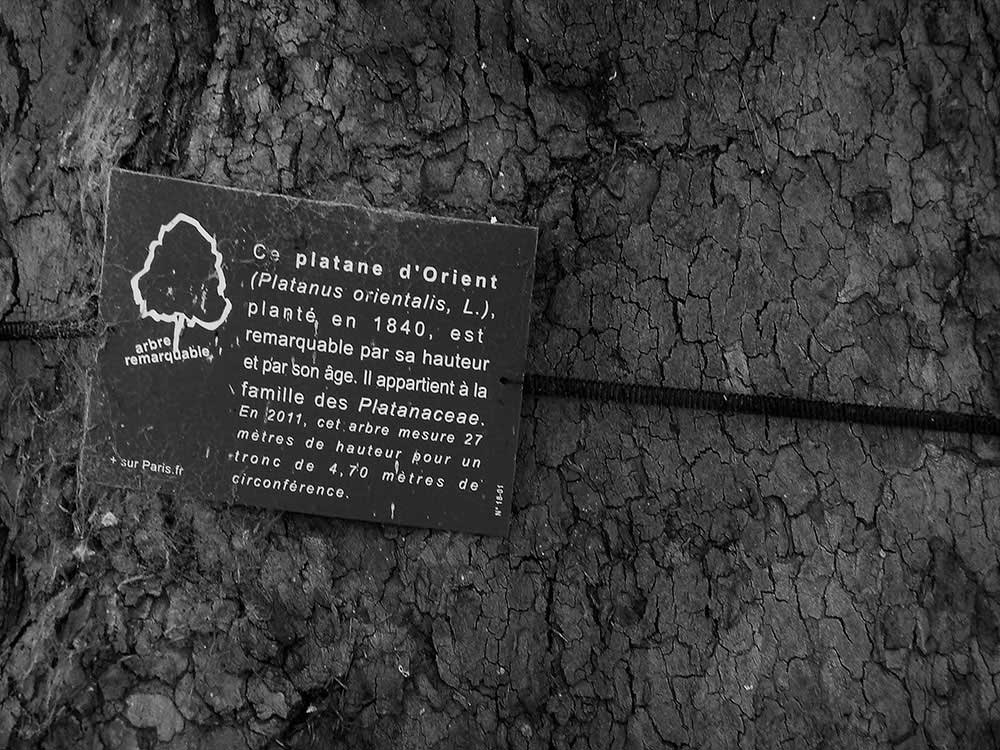
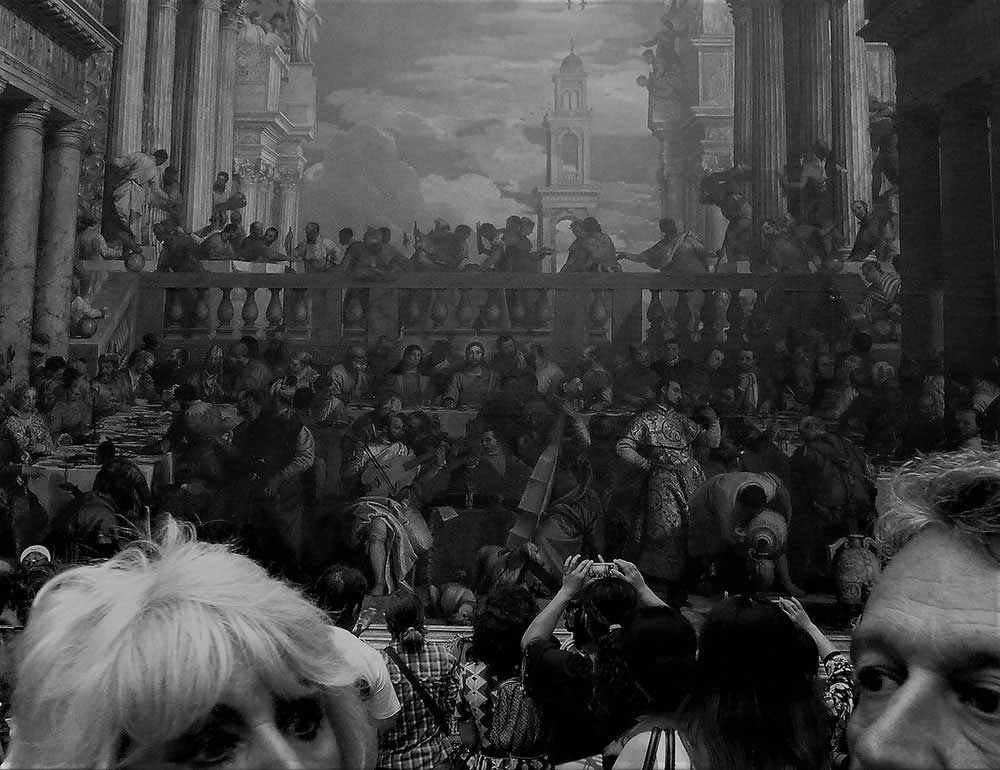
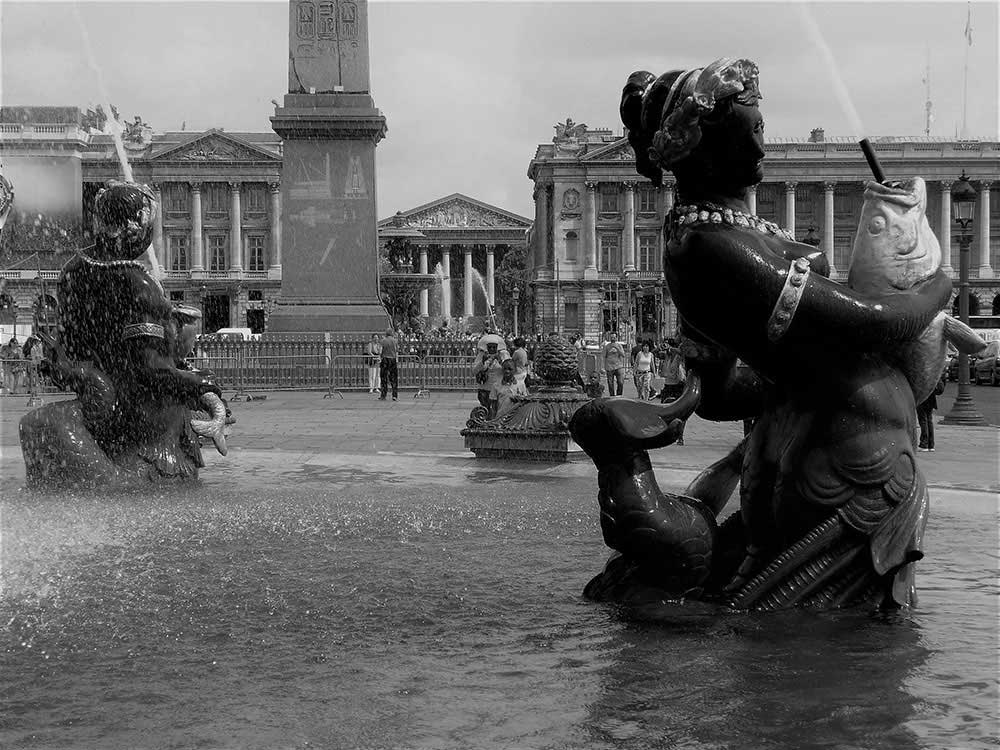
Neighborhoods, a refuge for the locals
